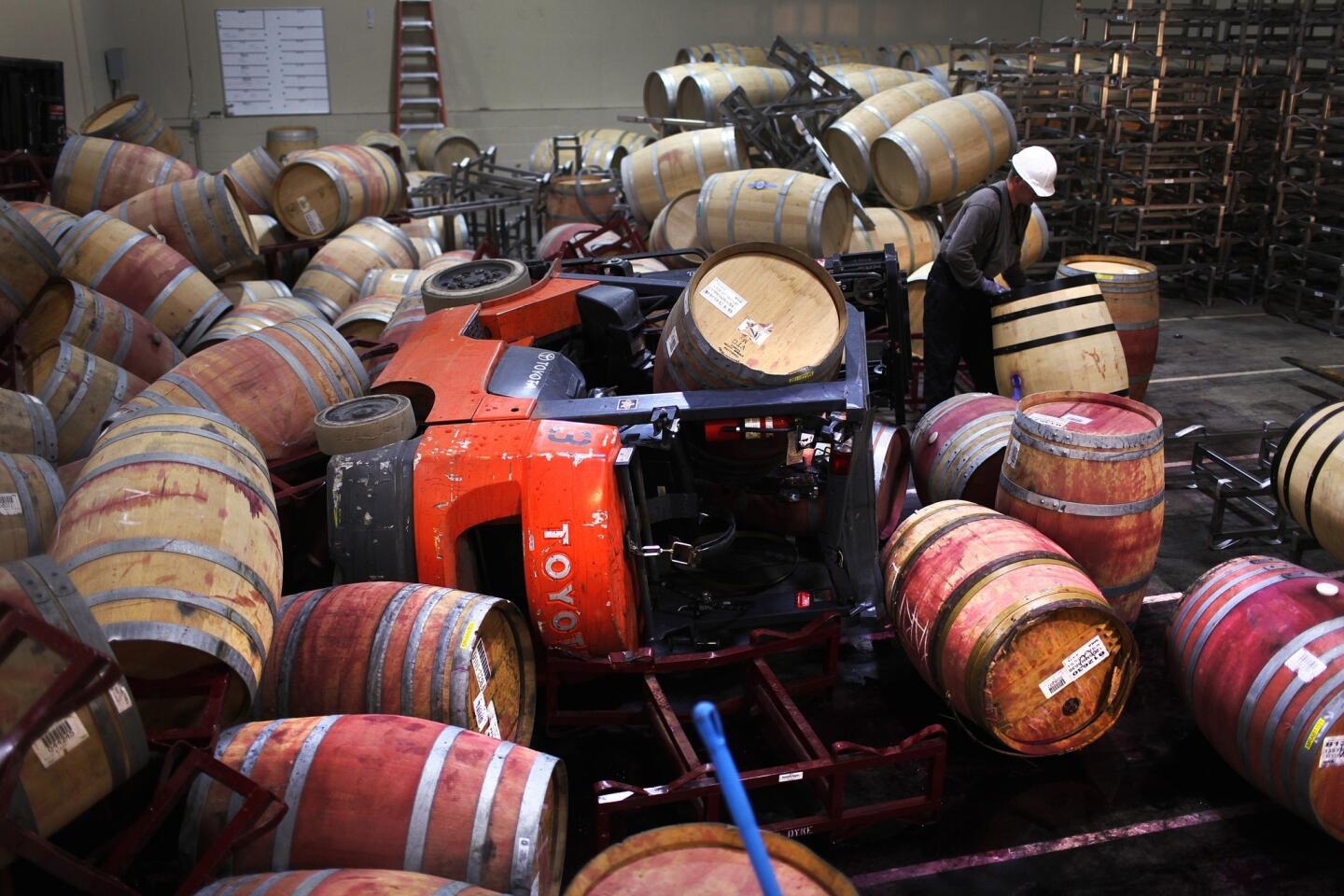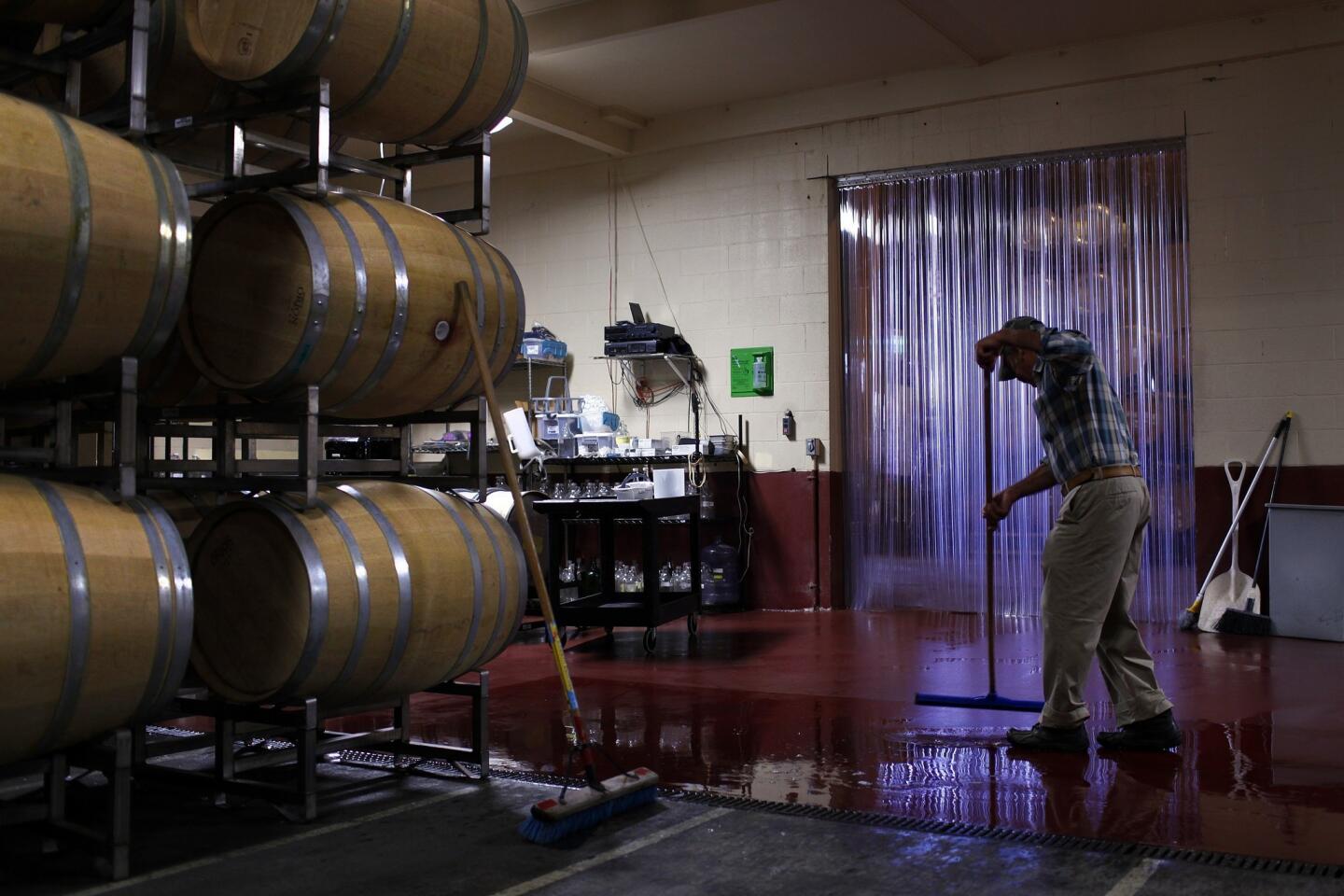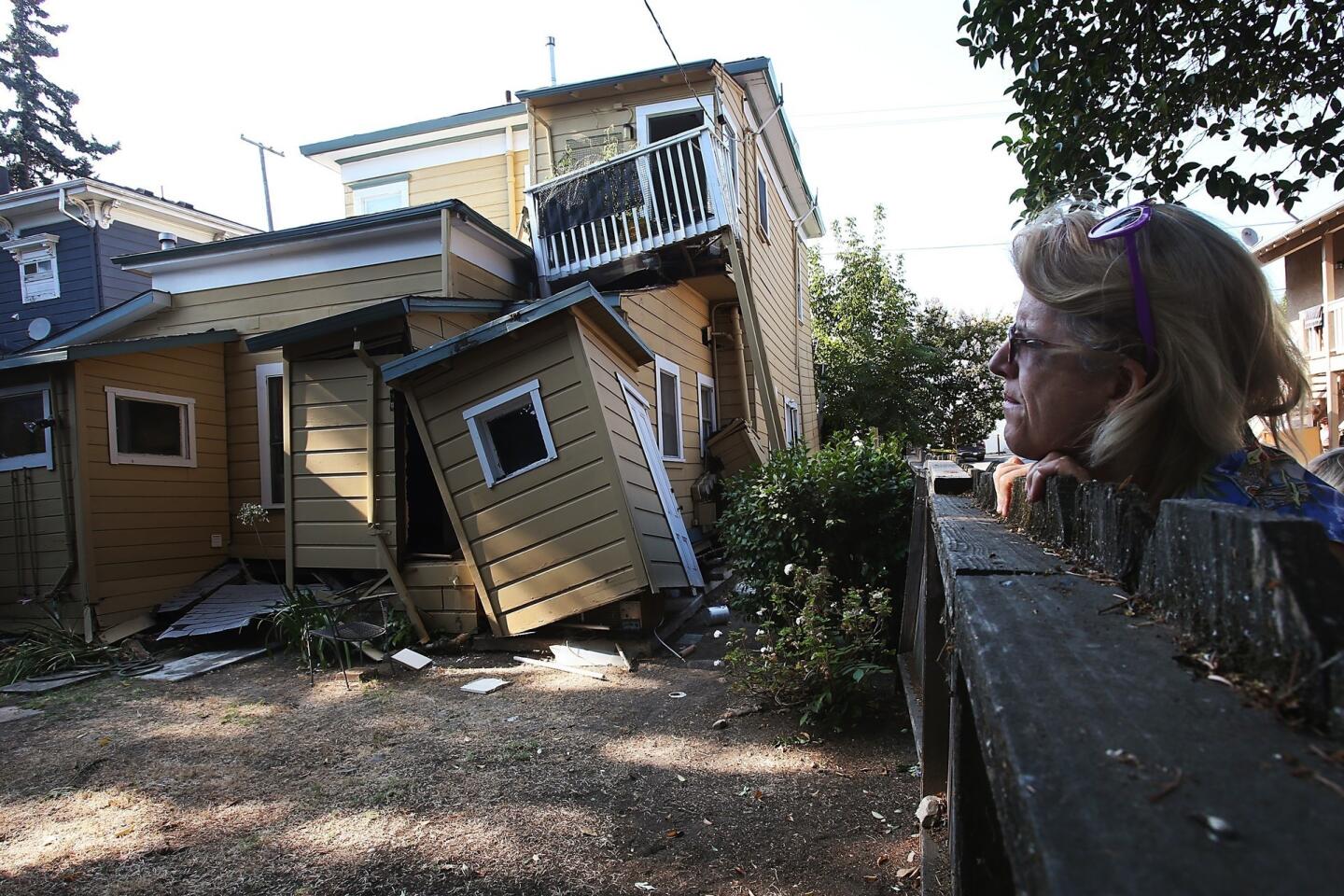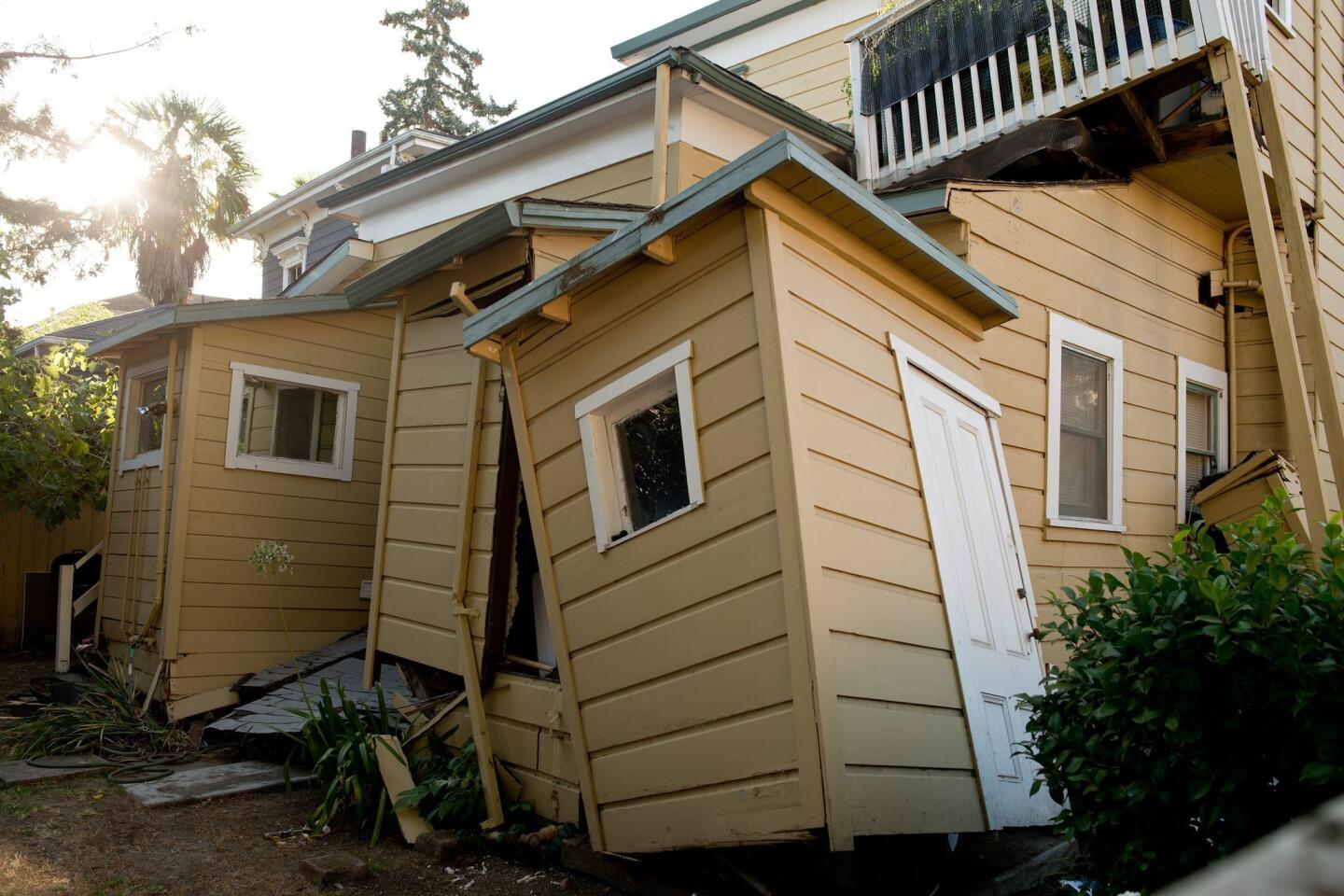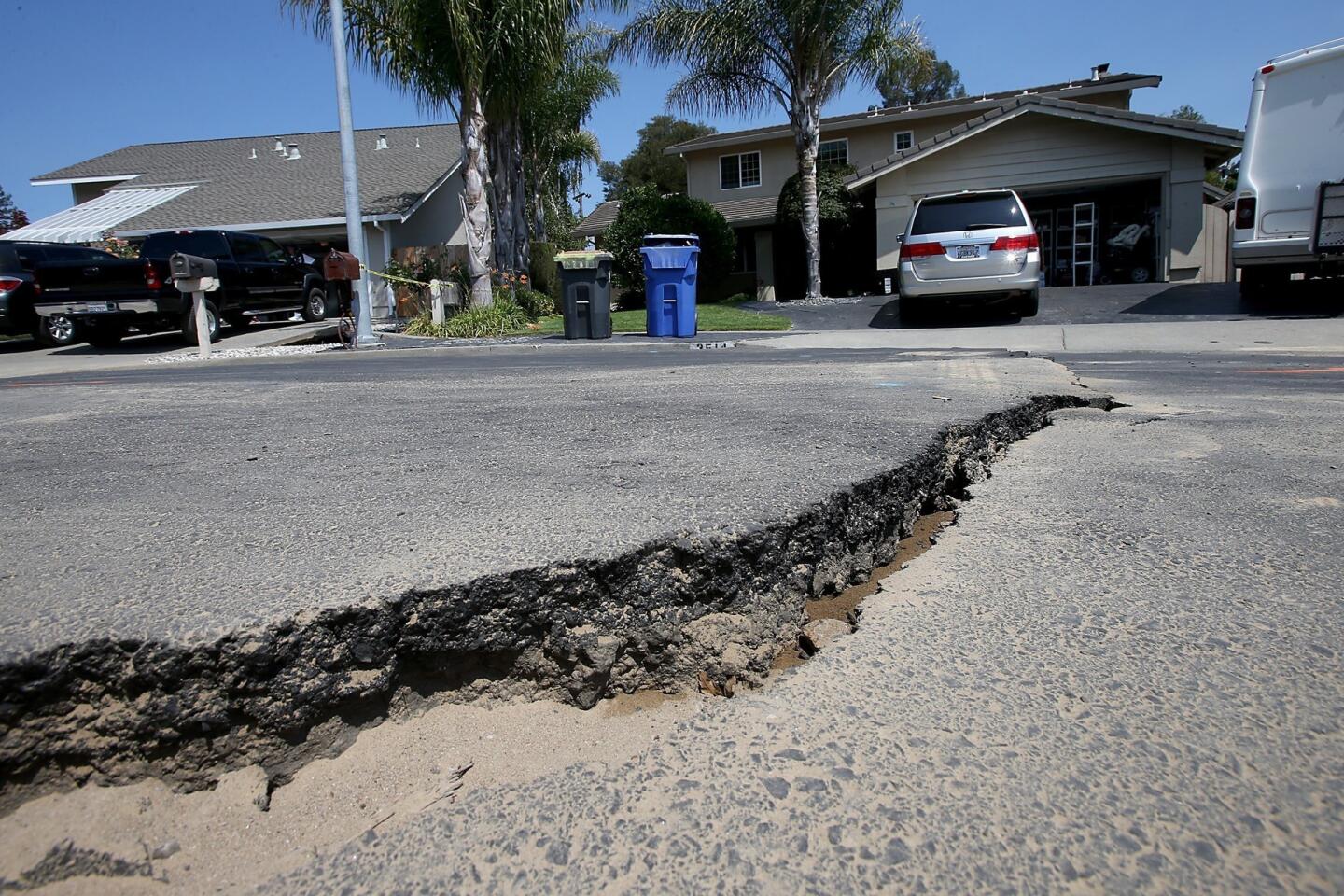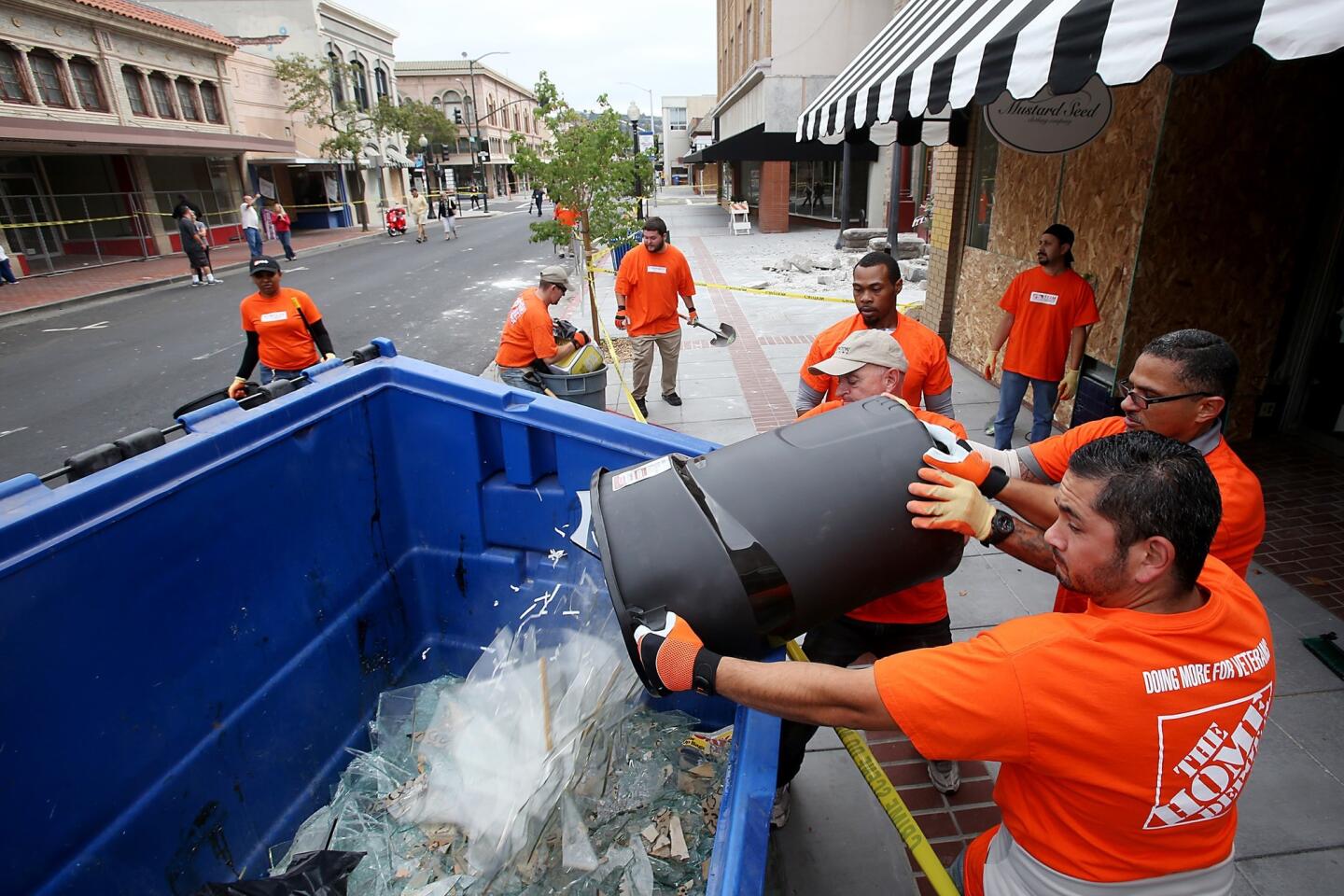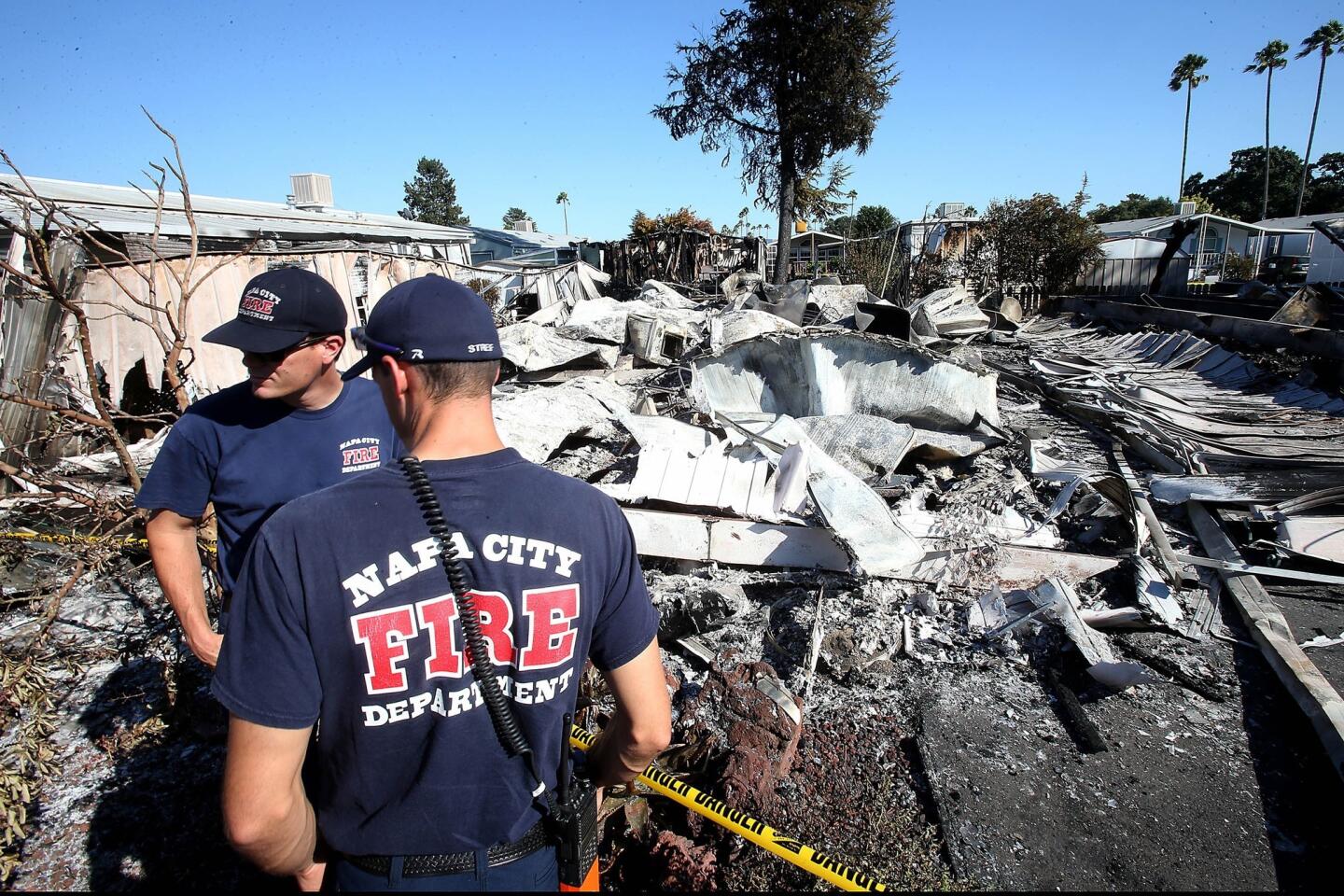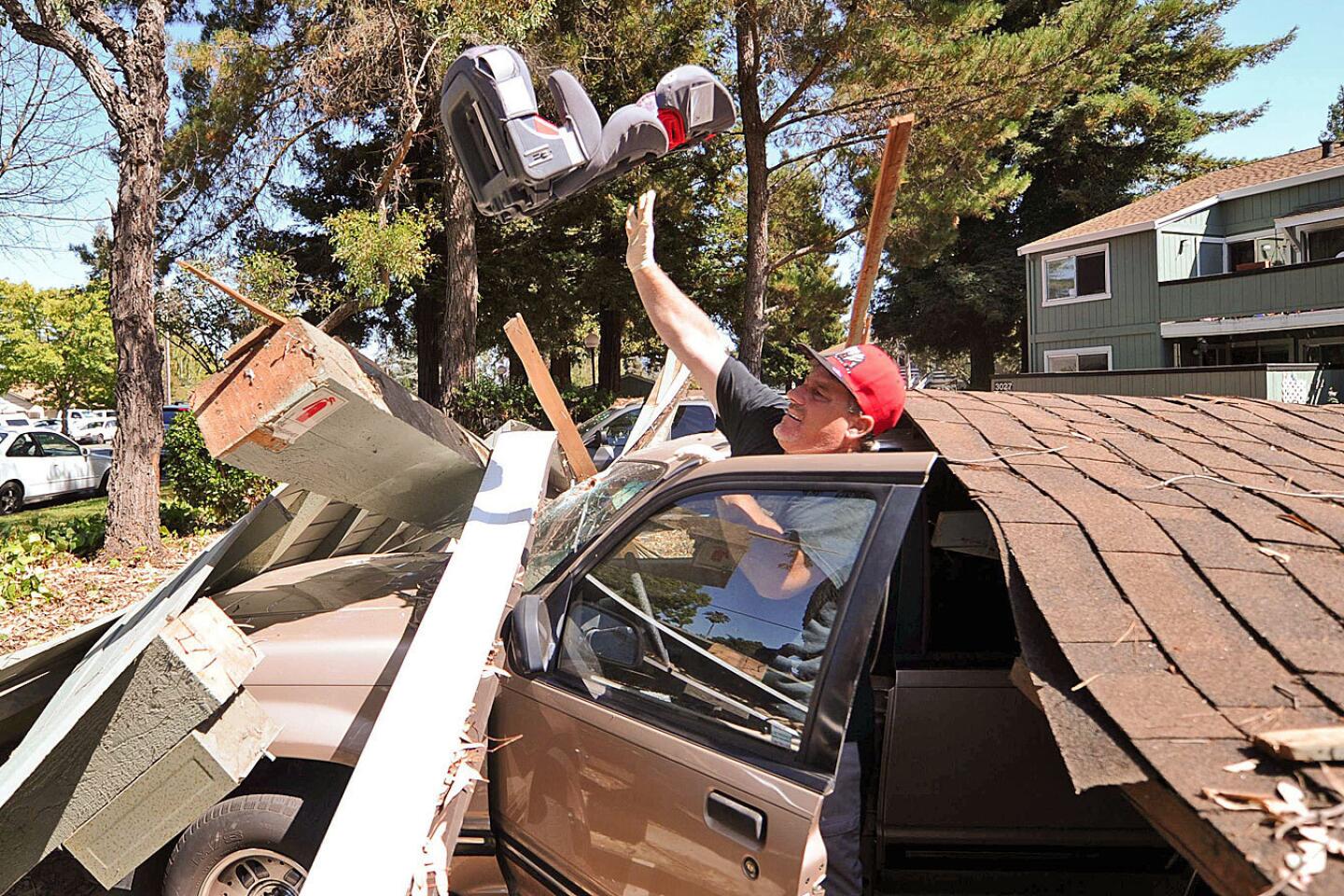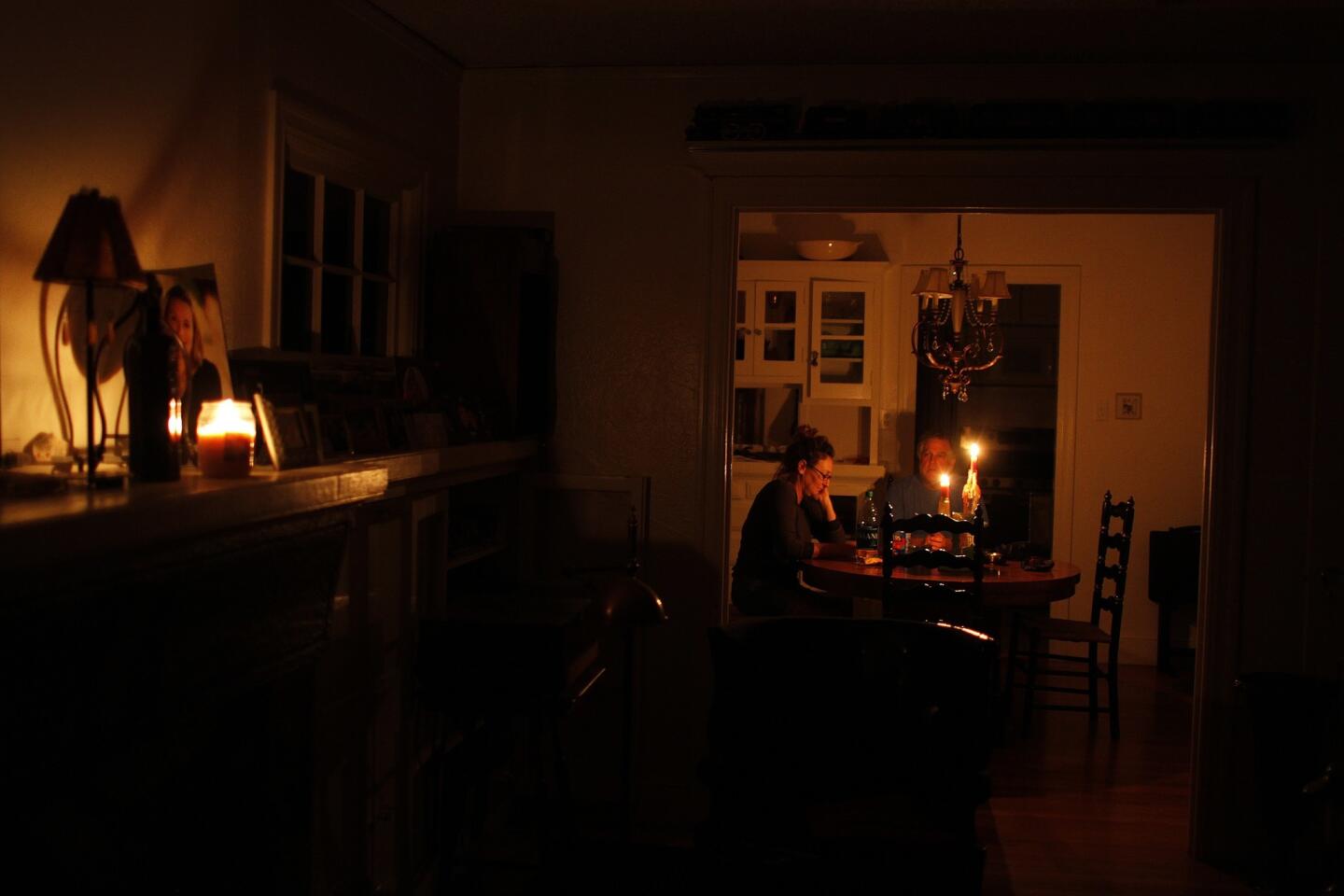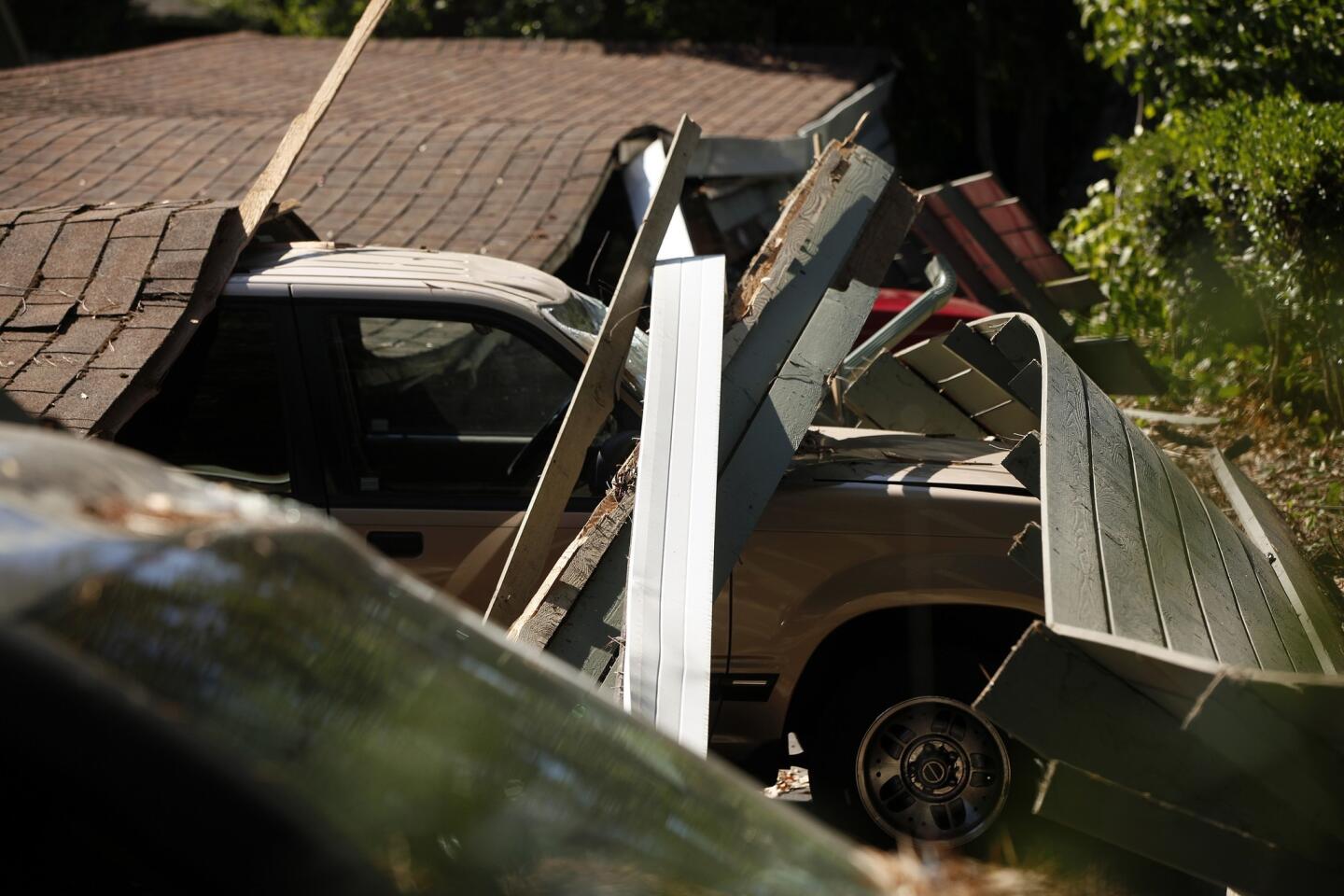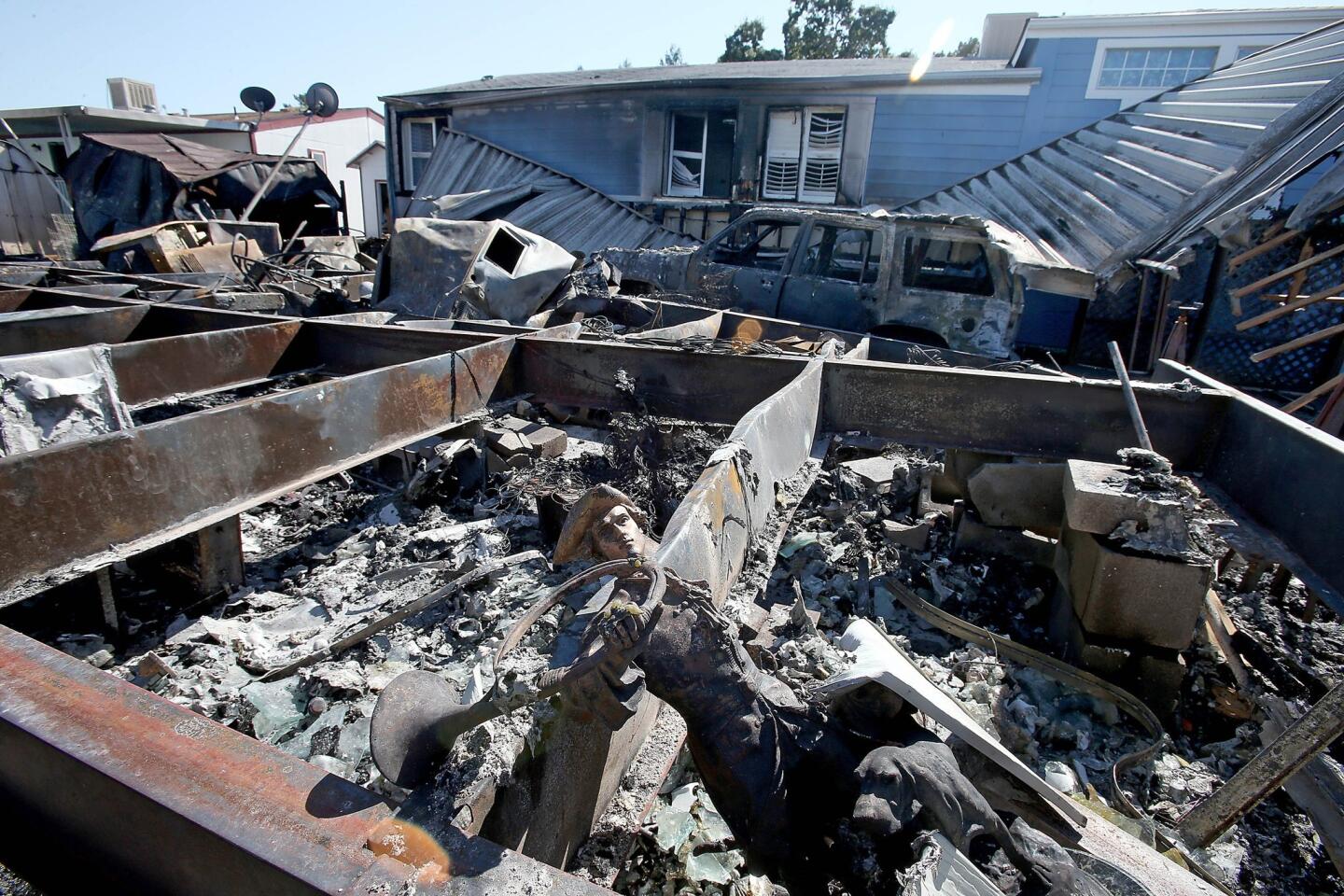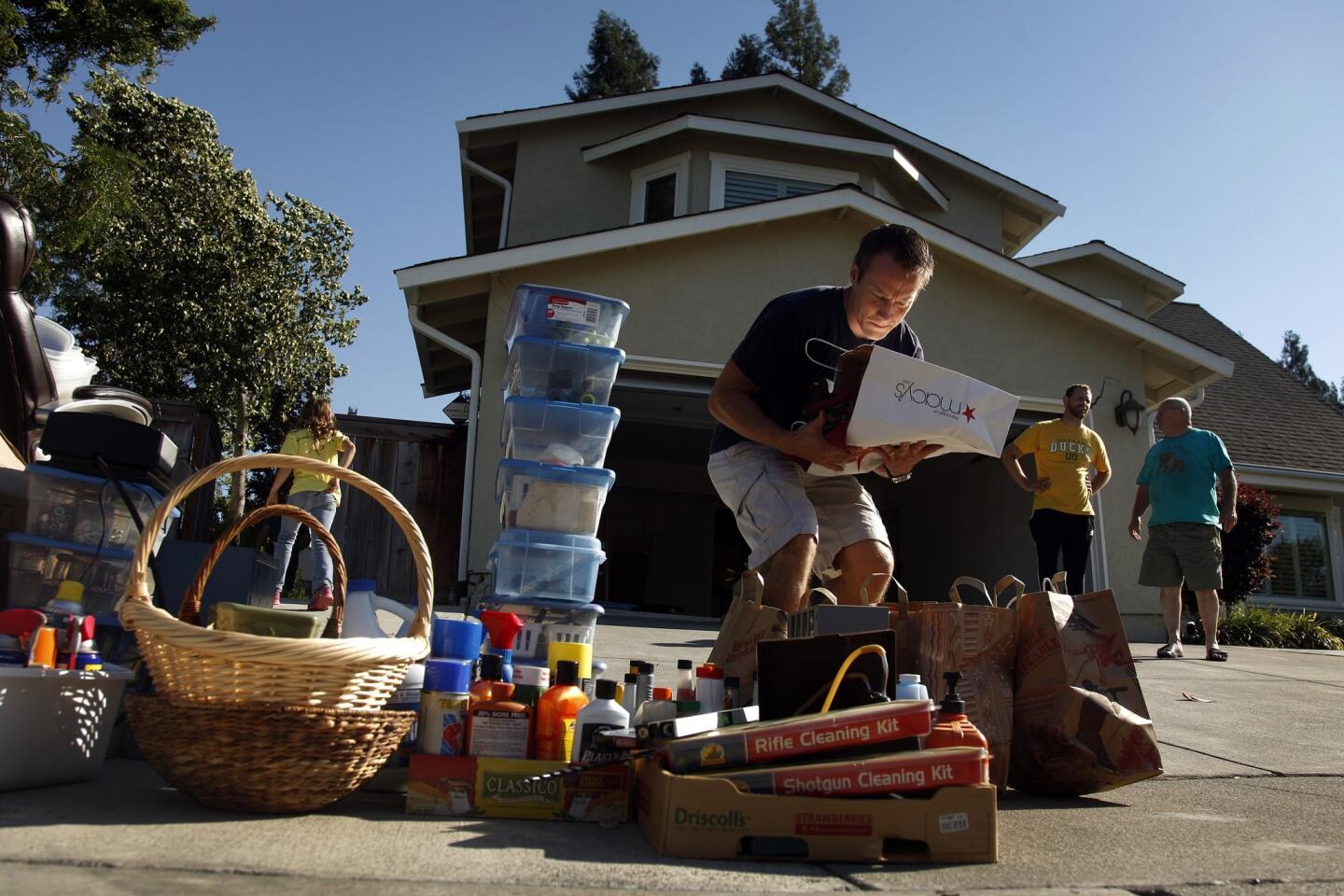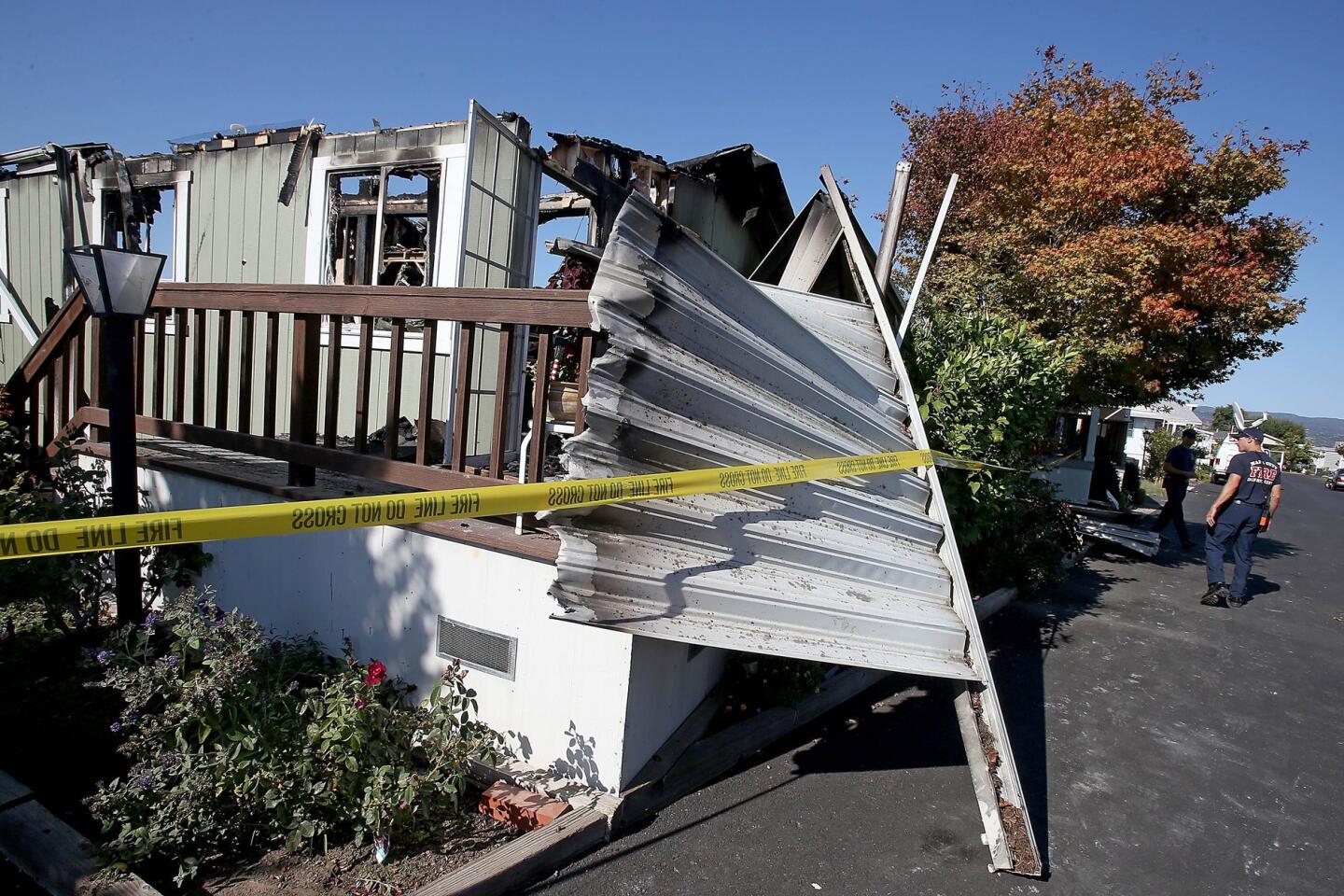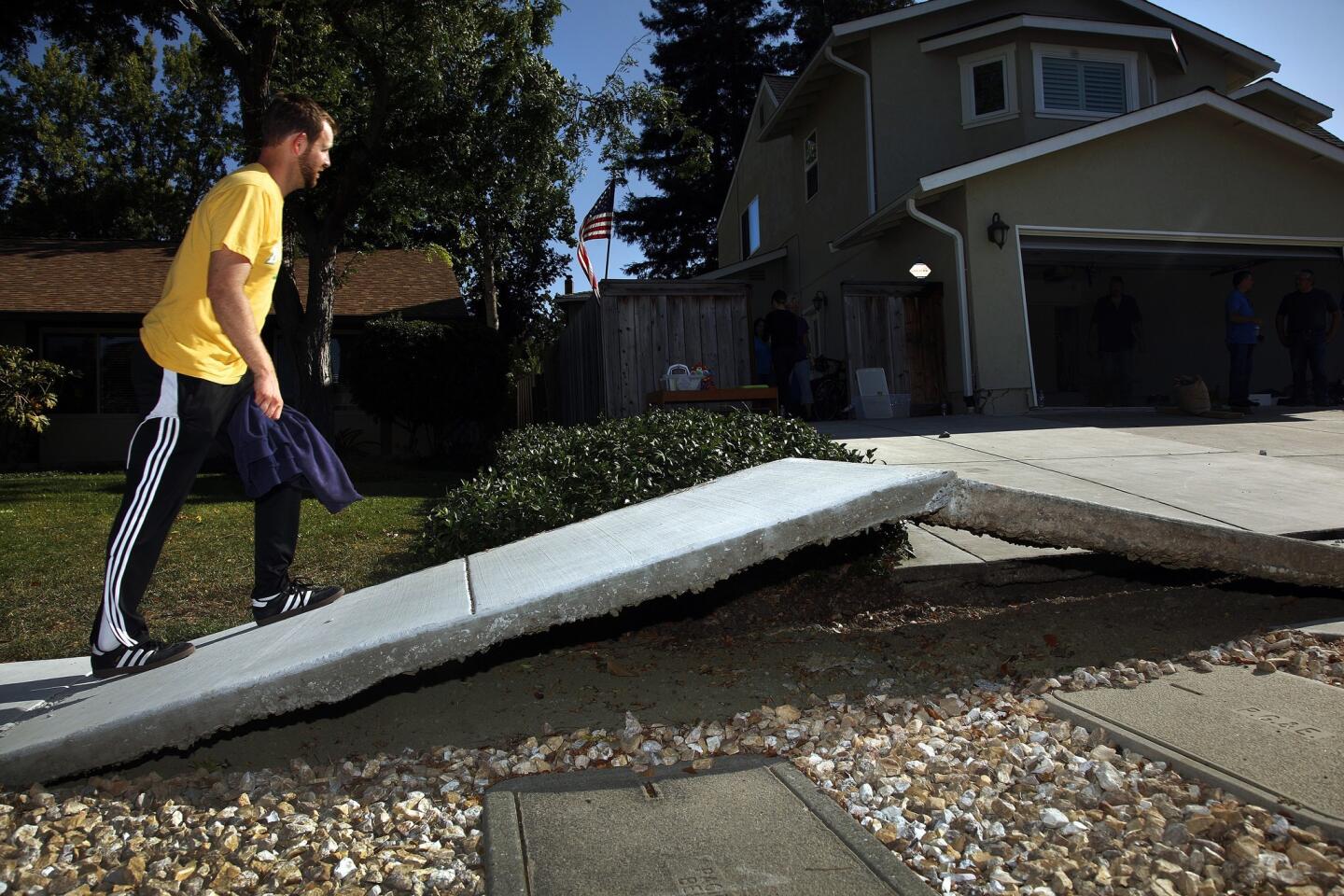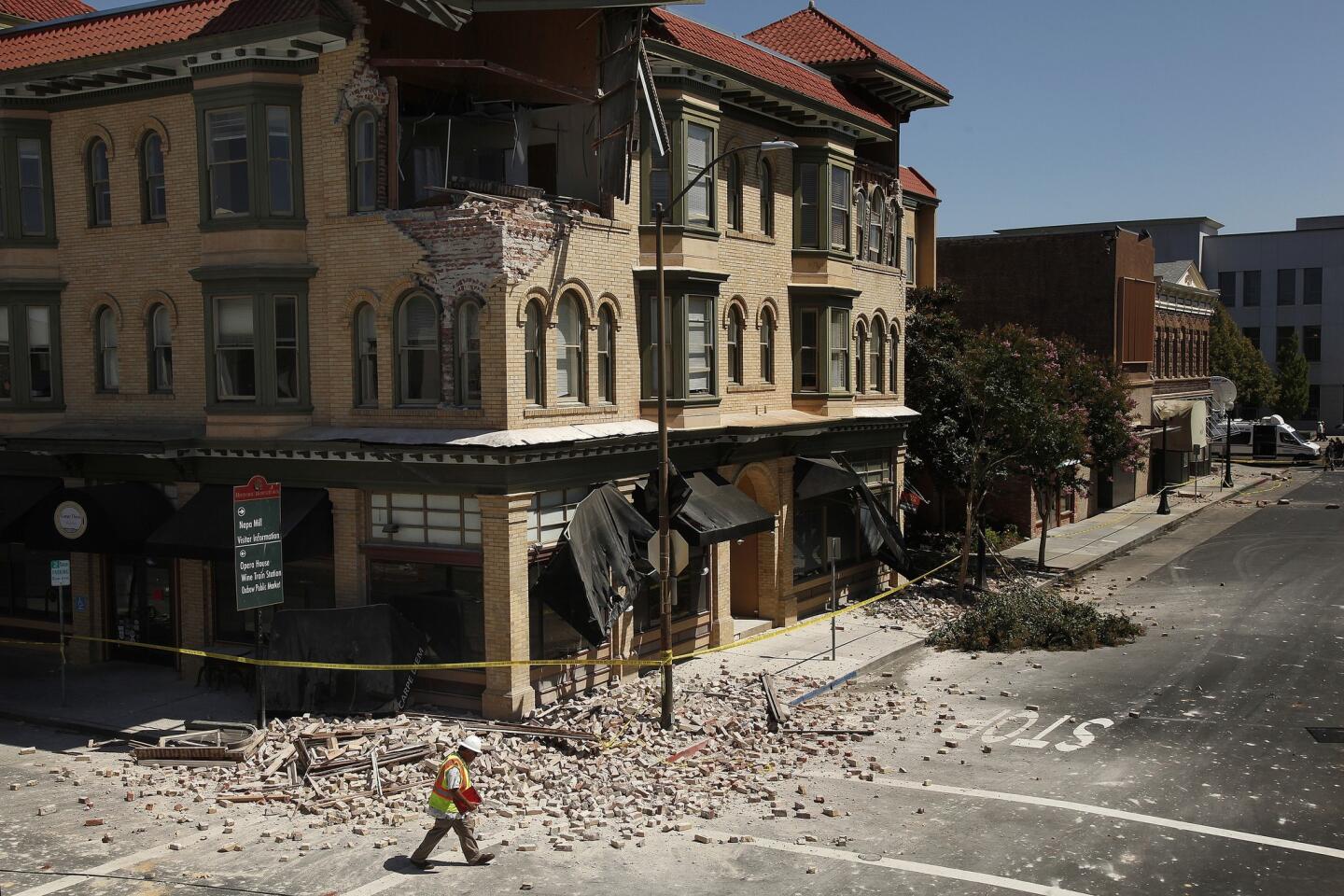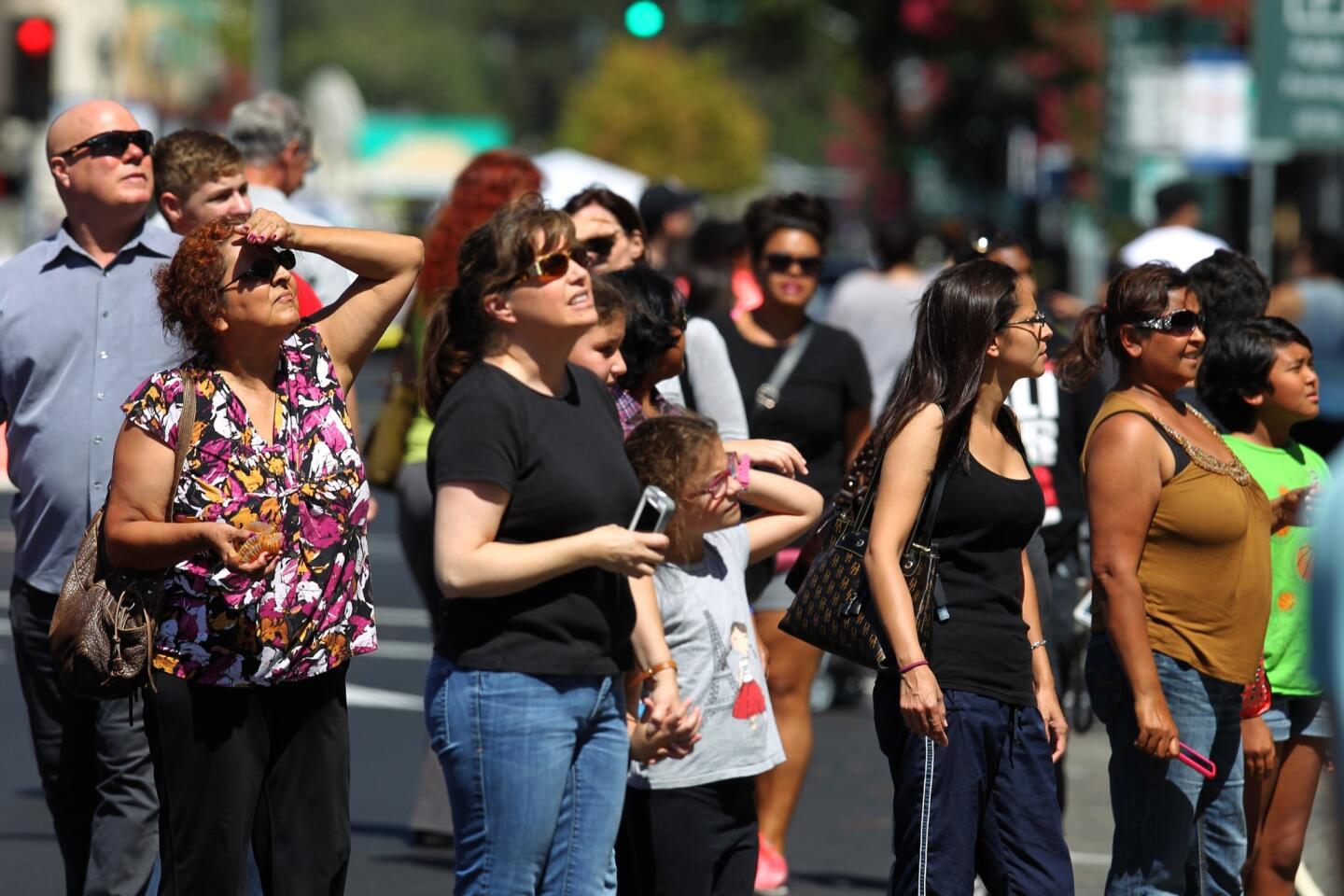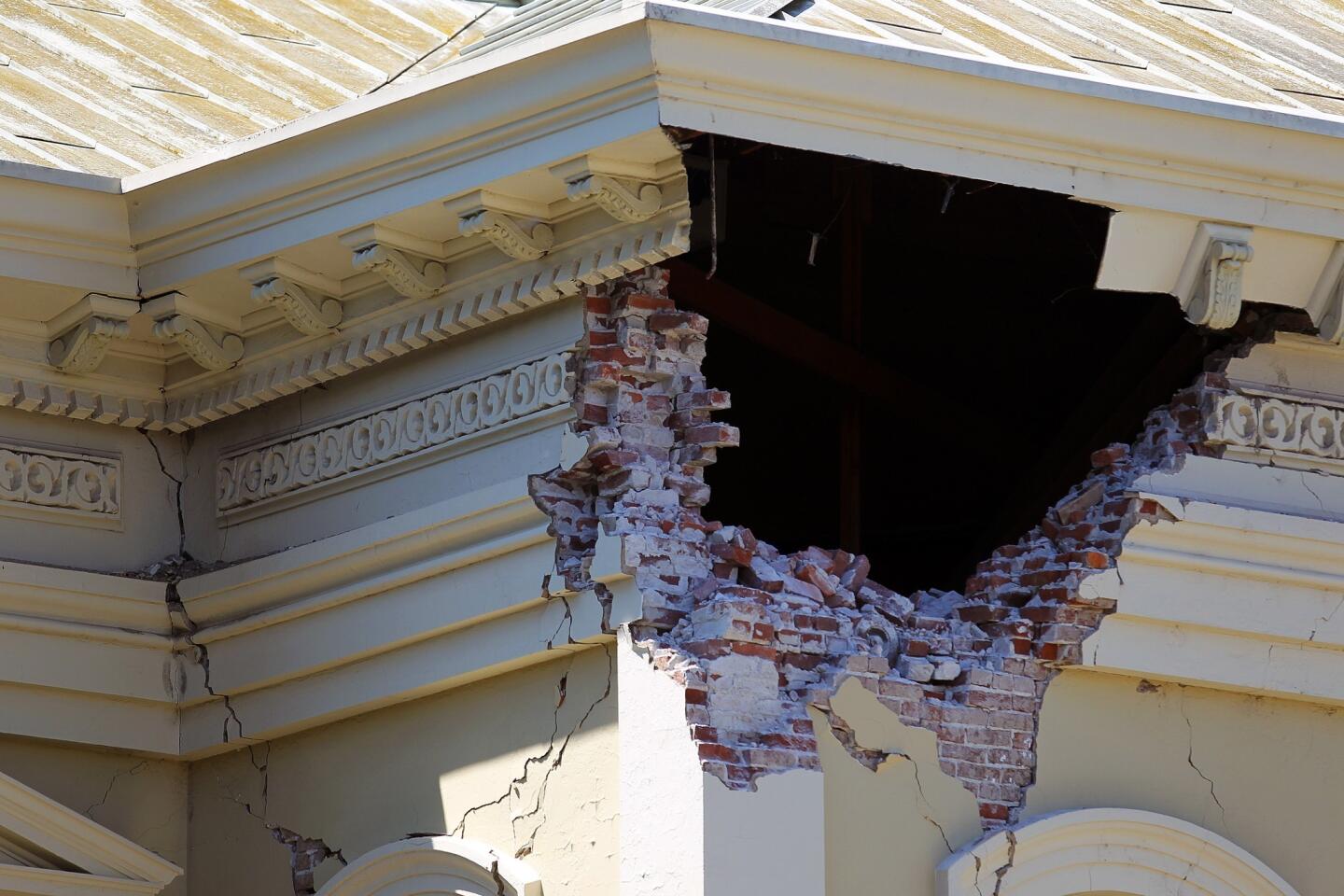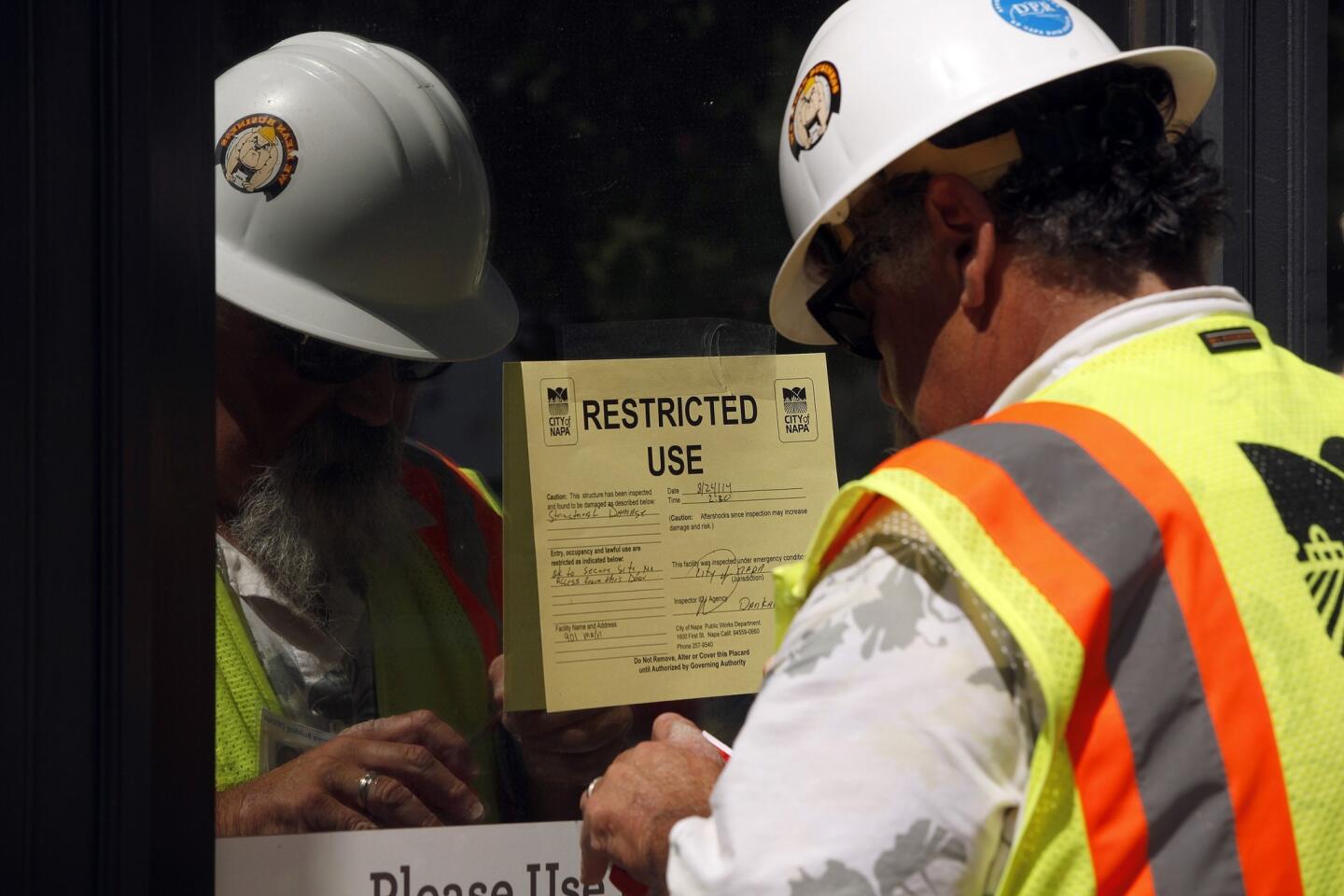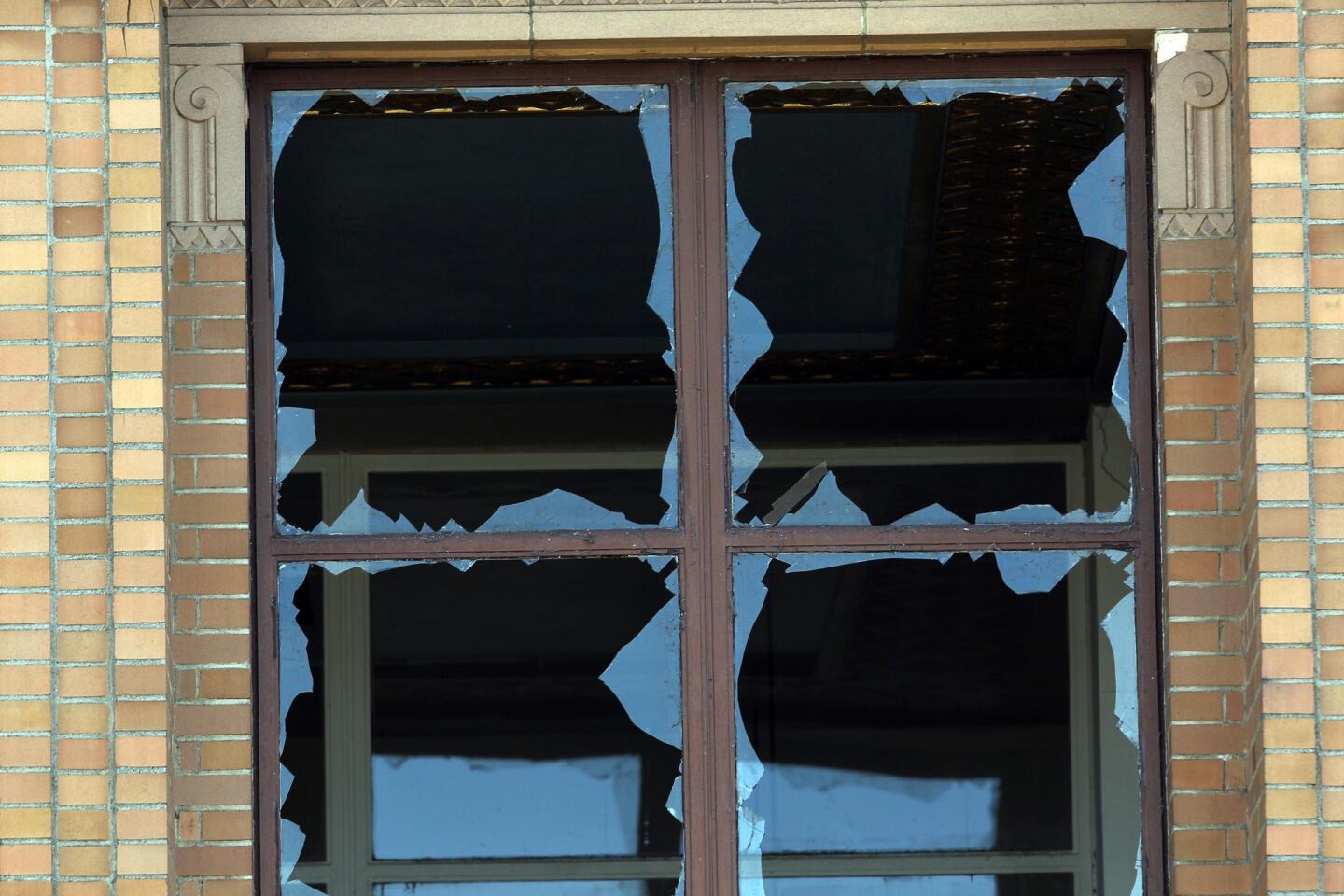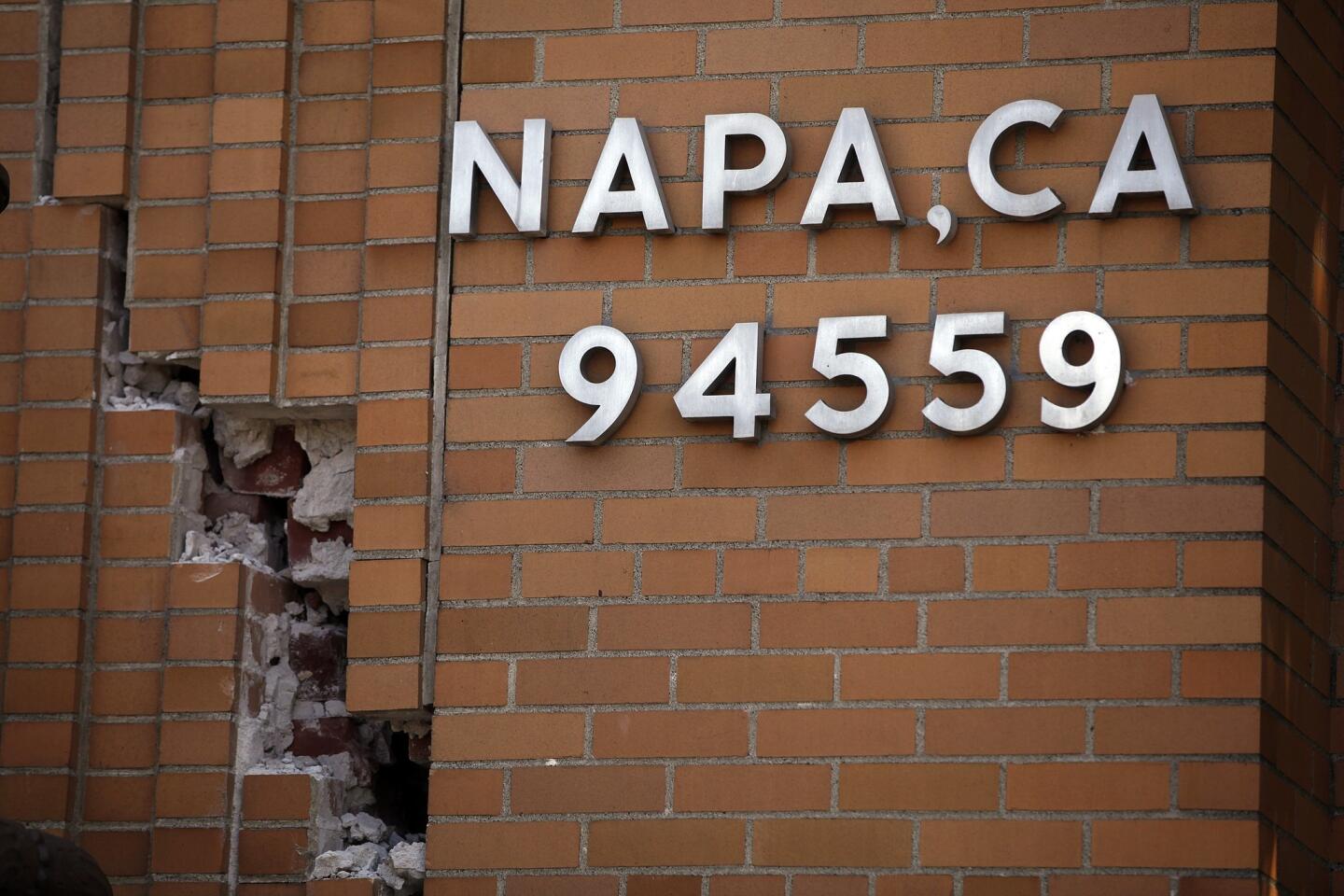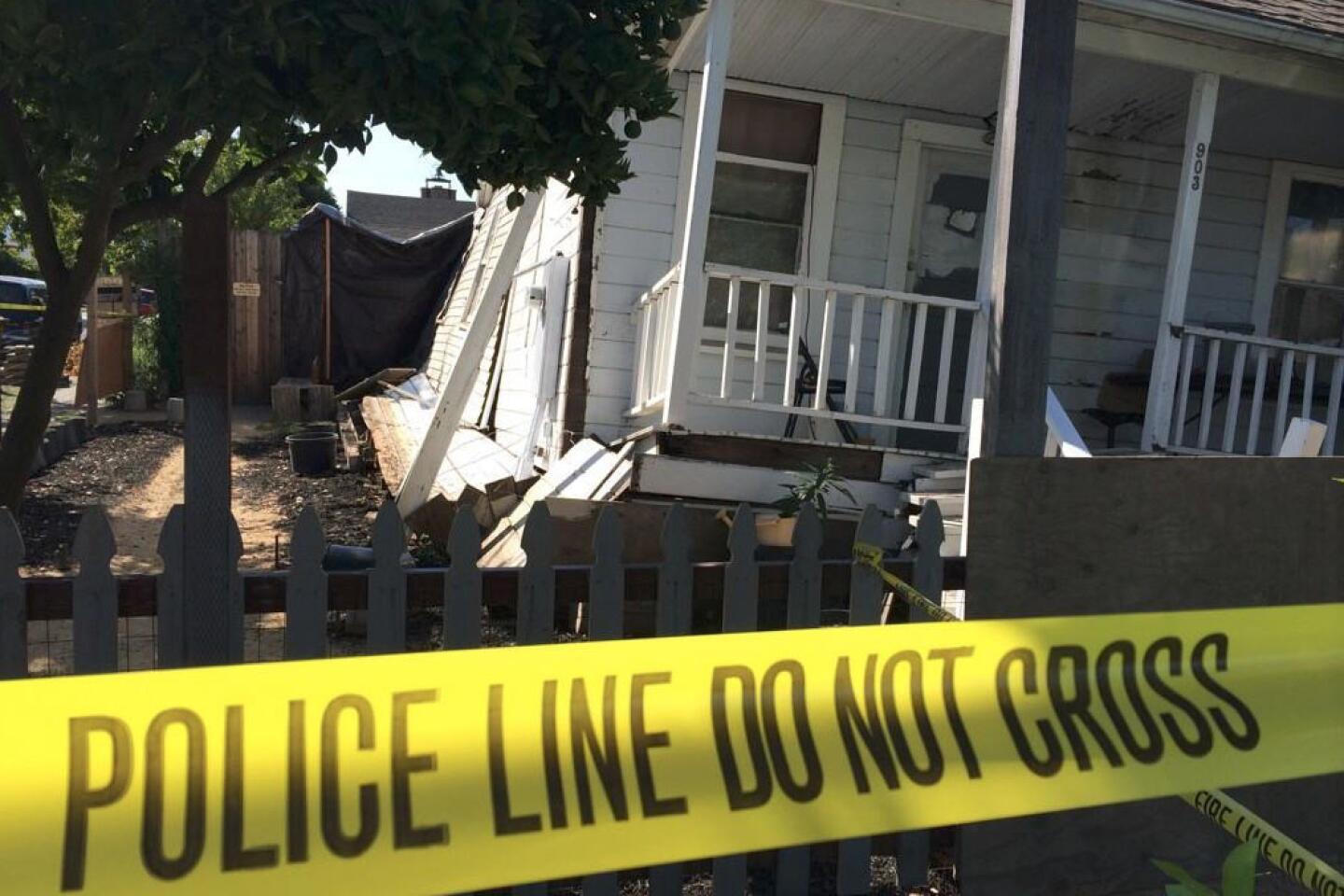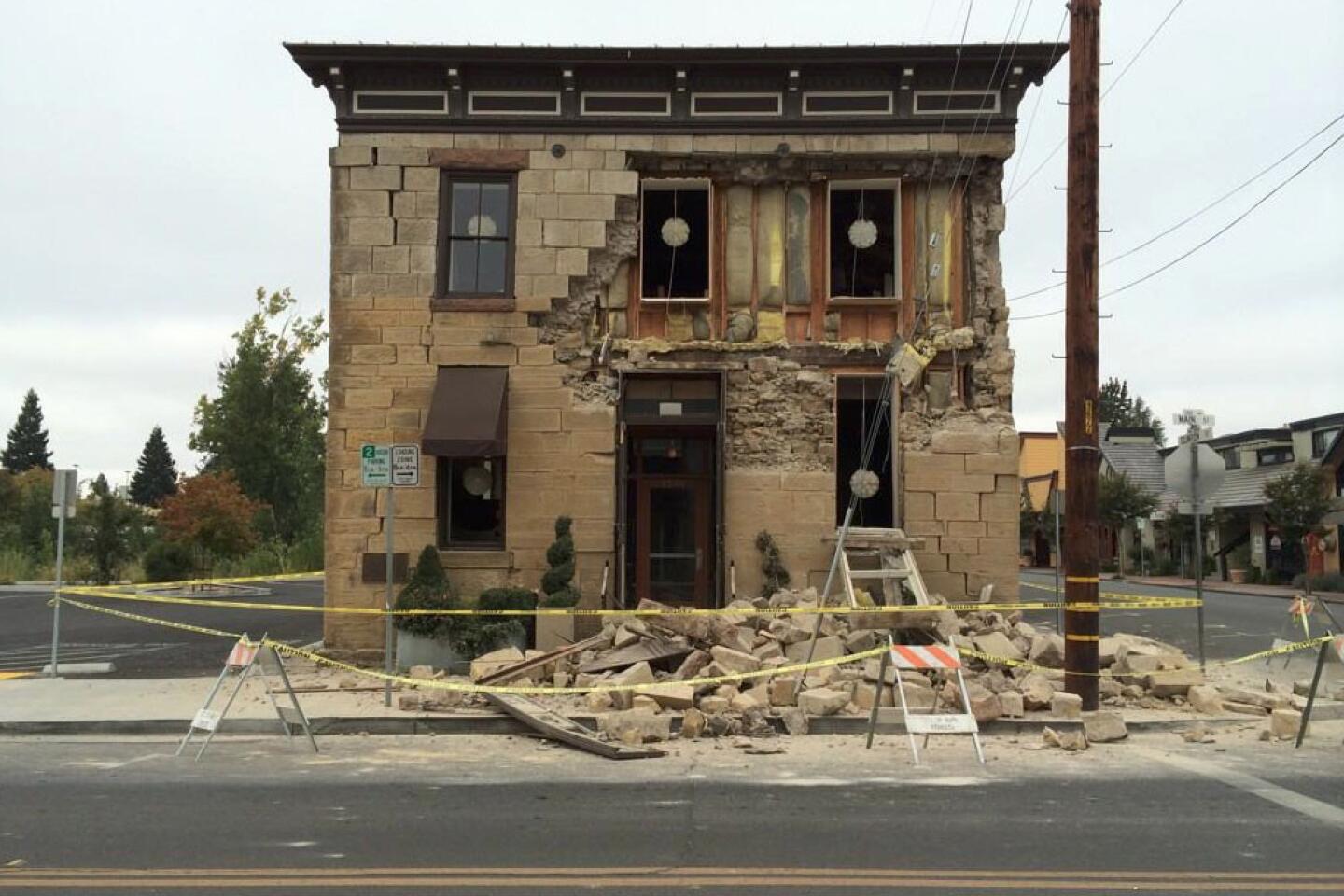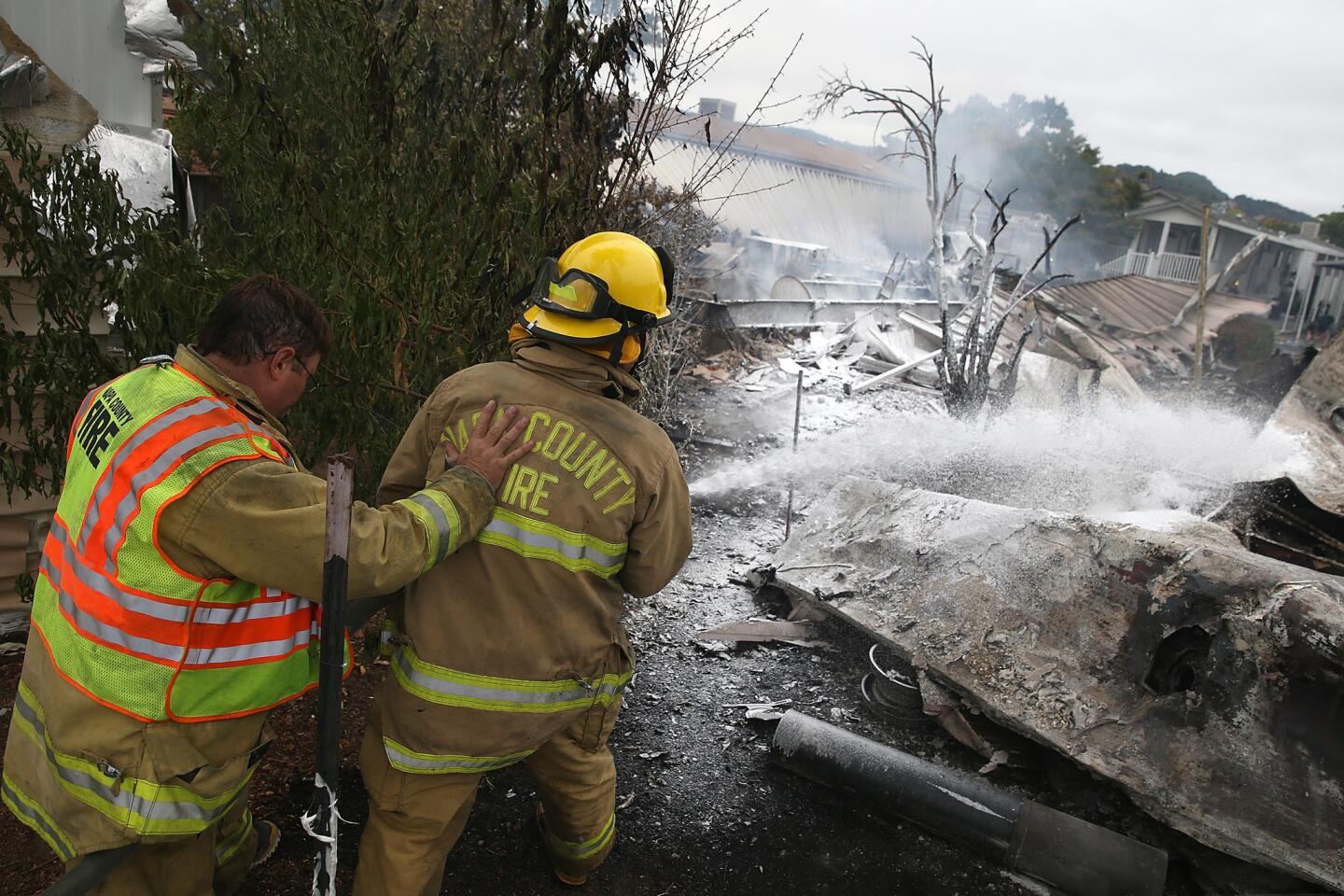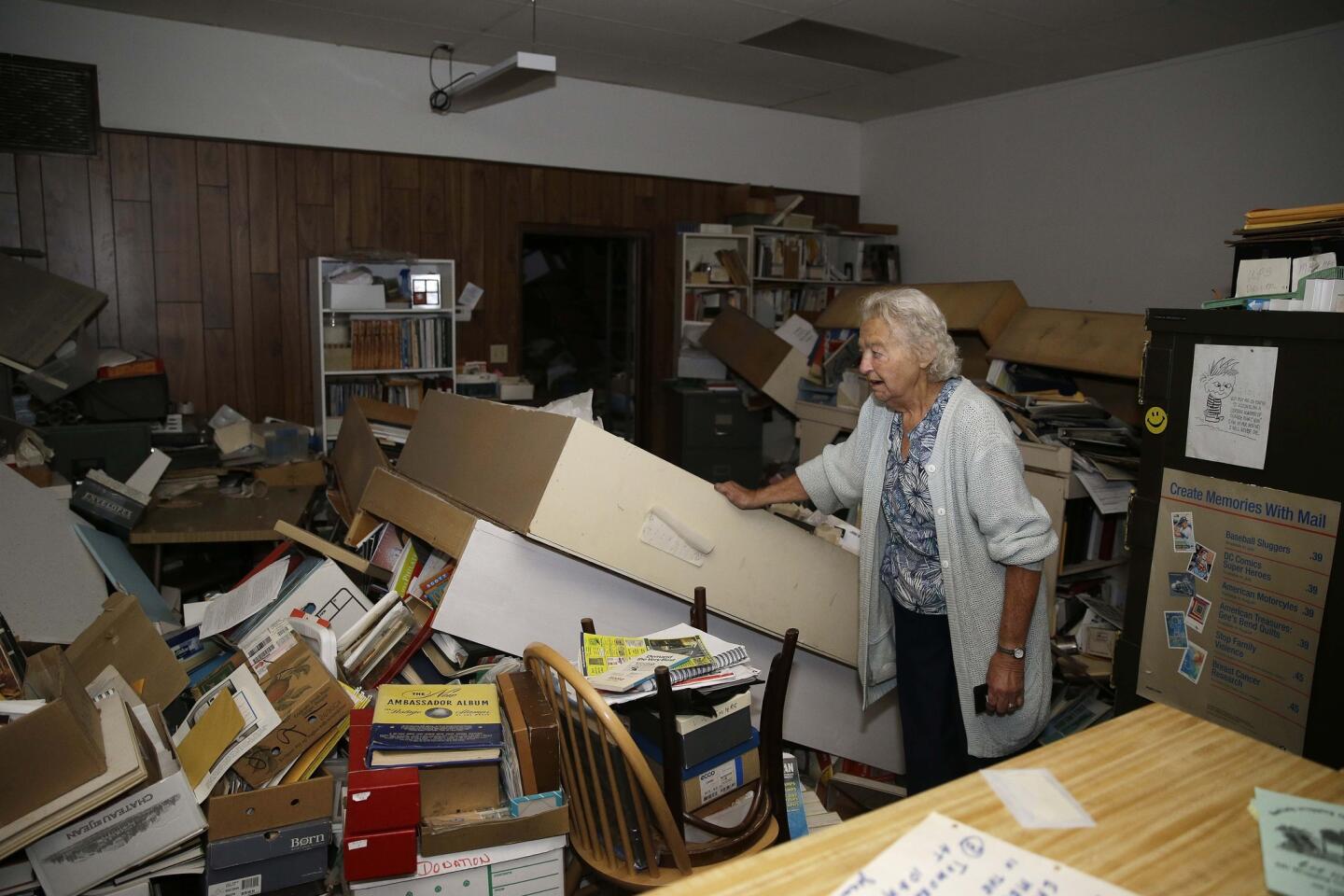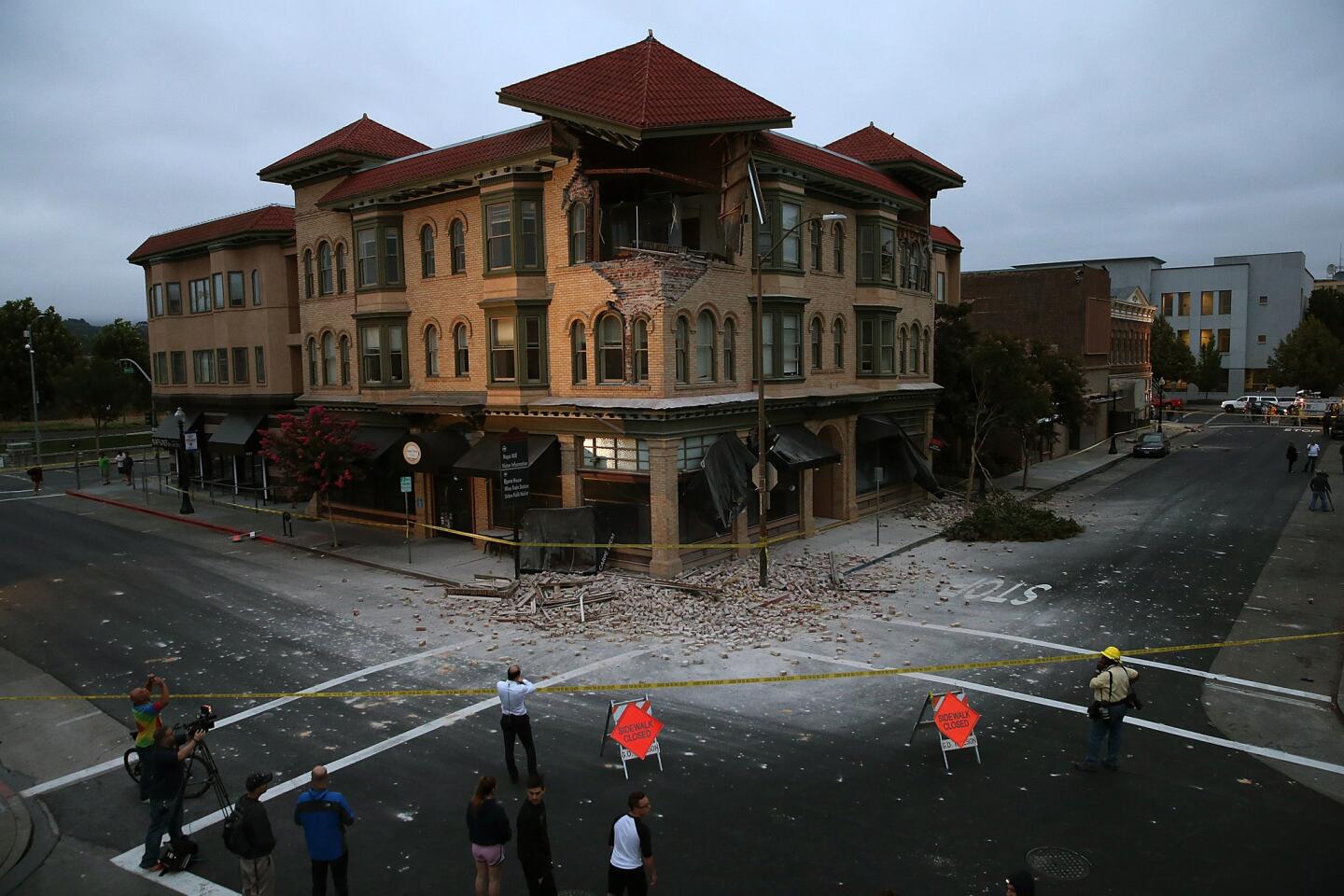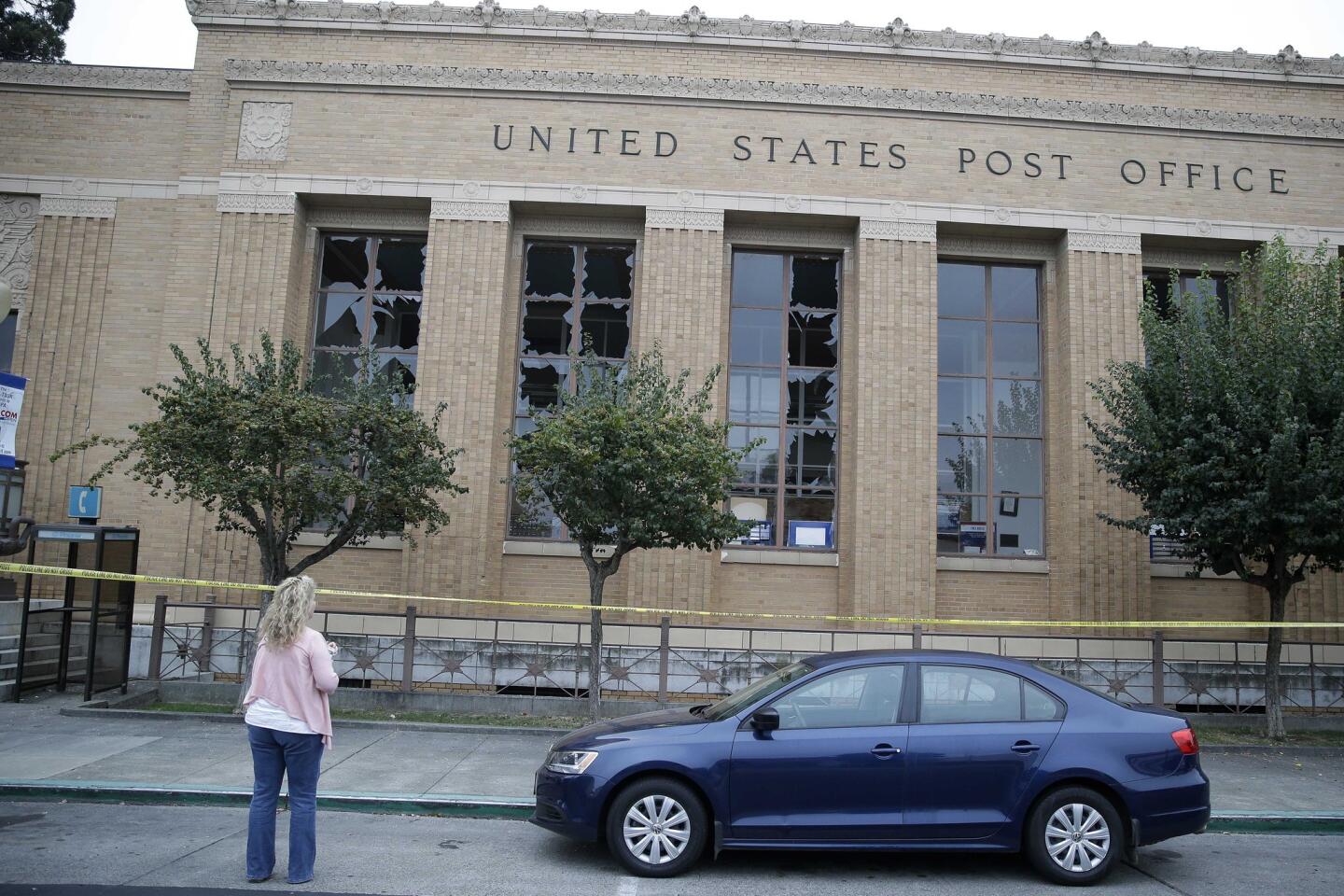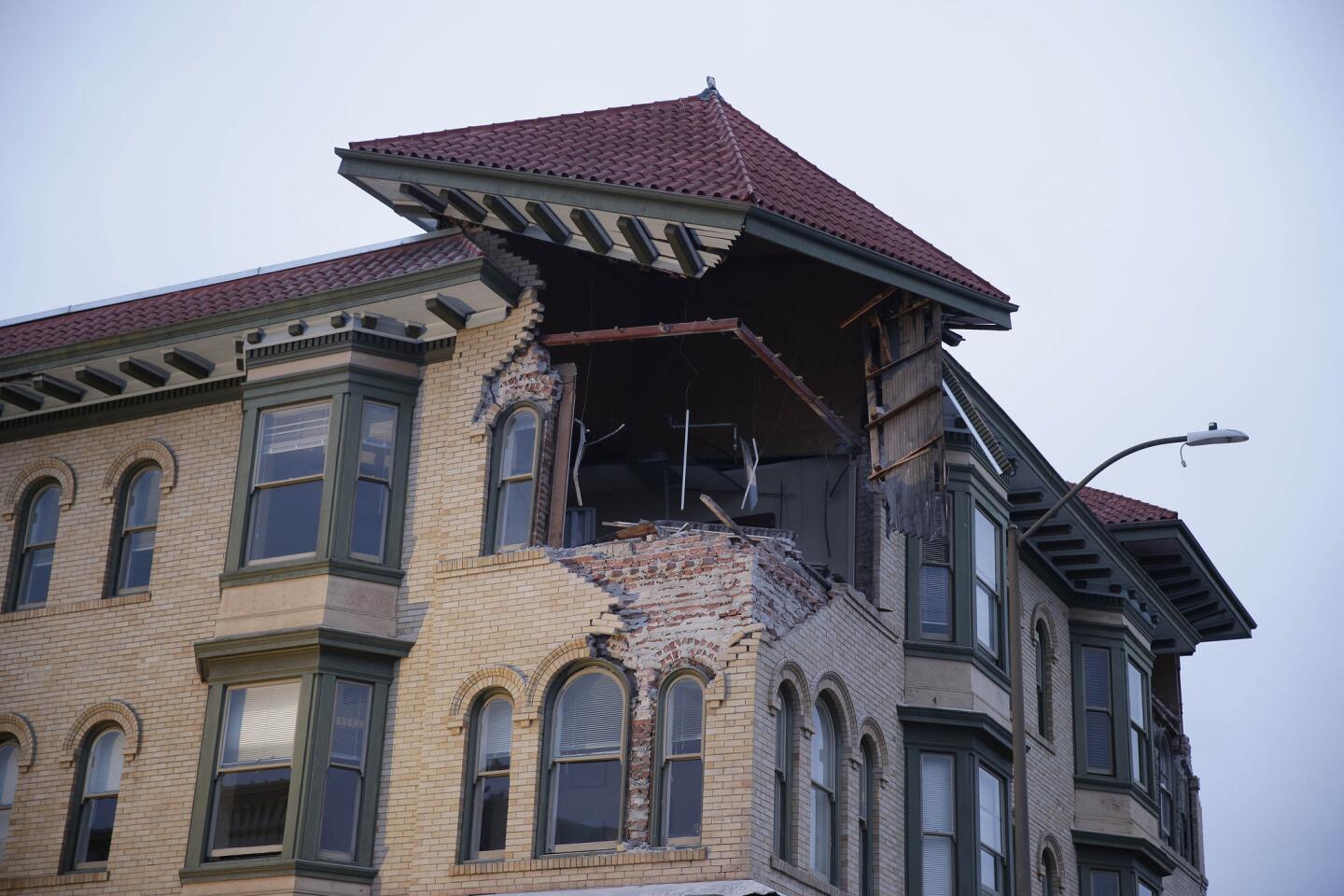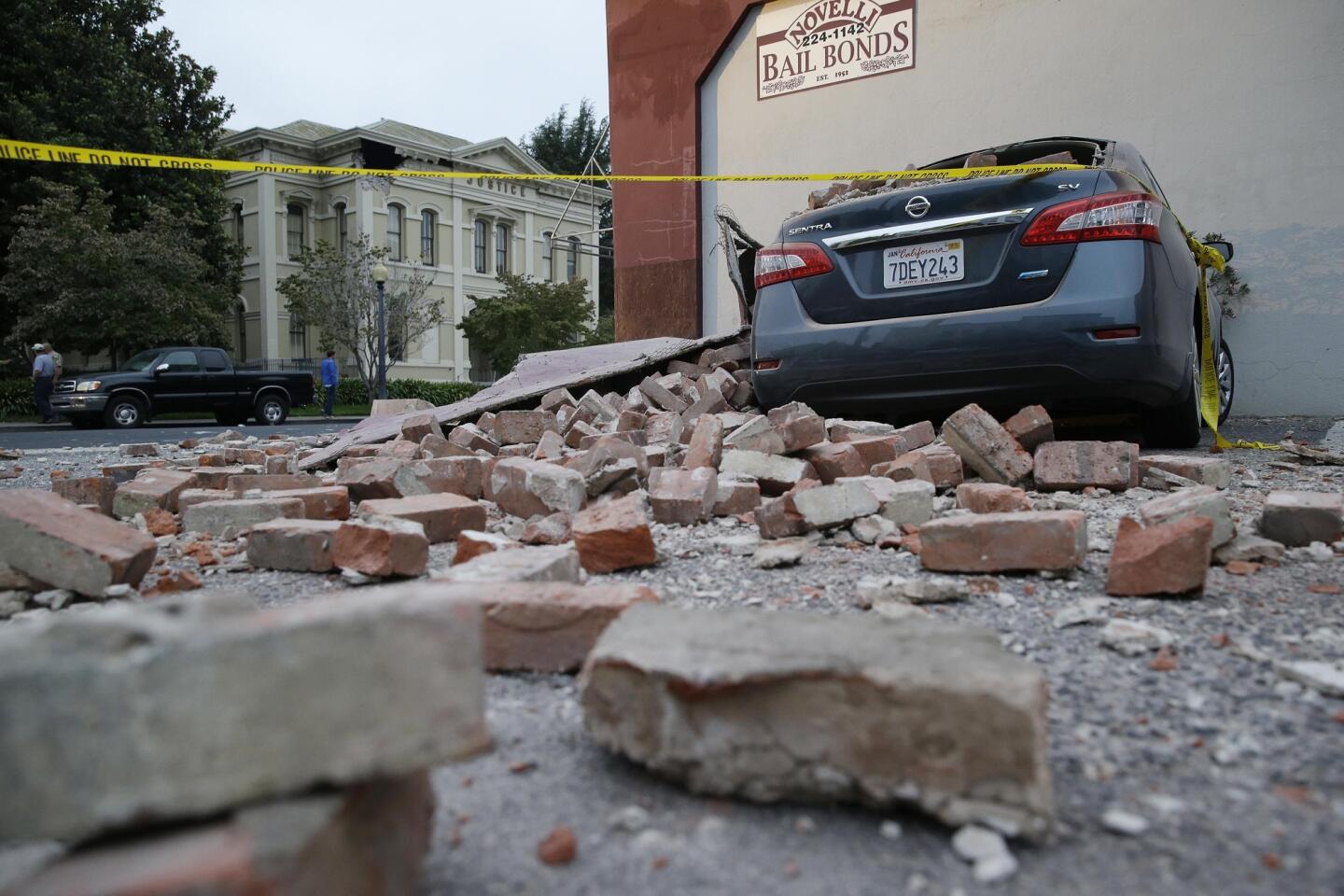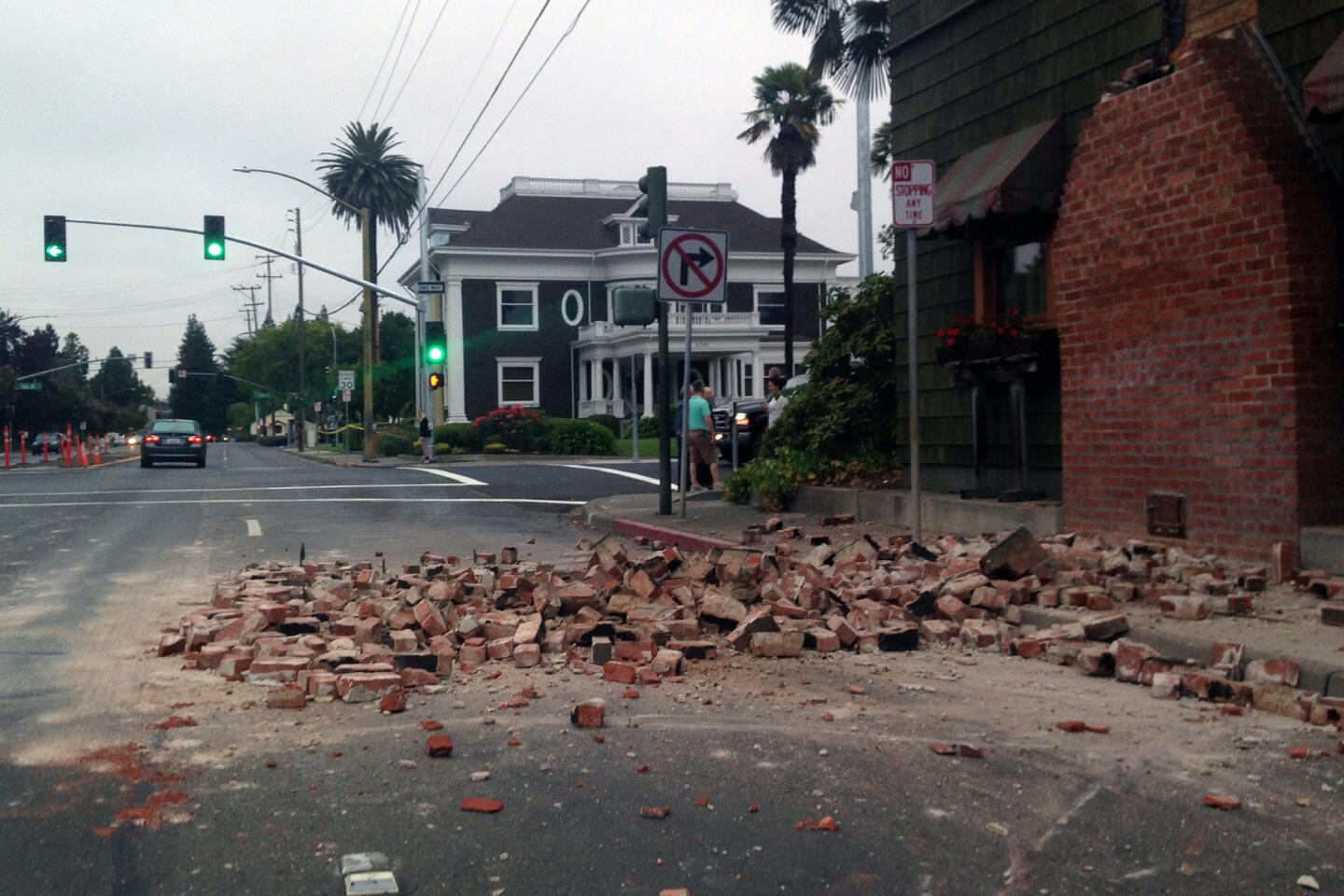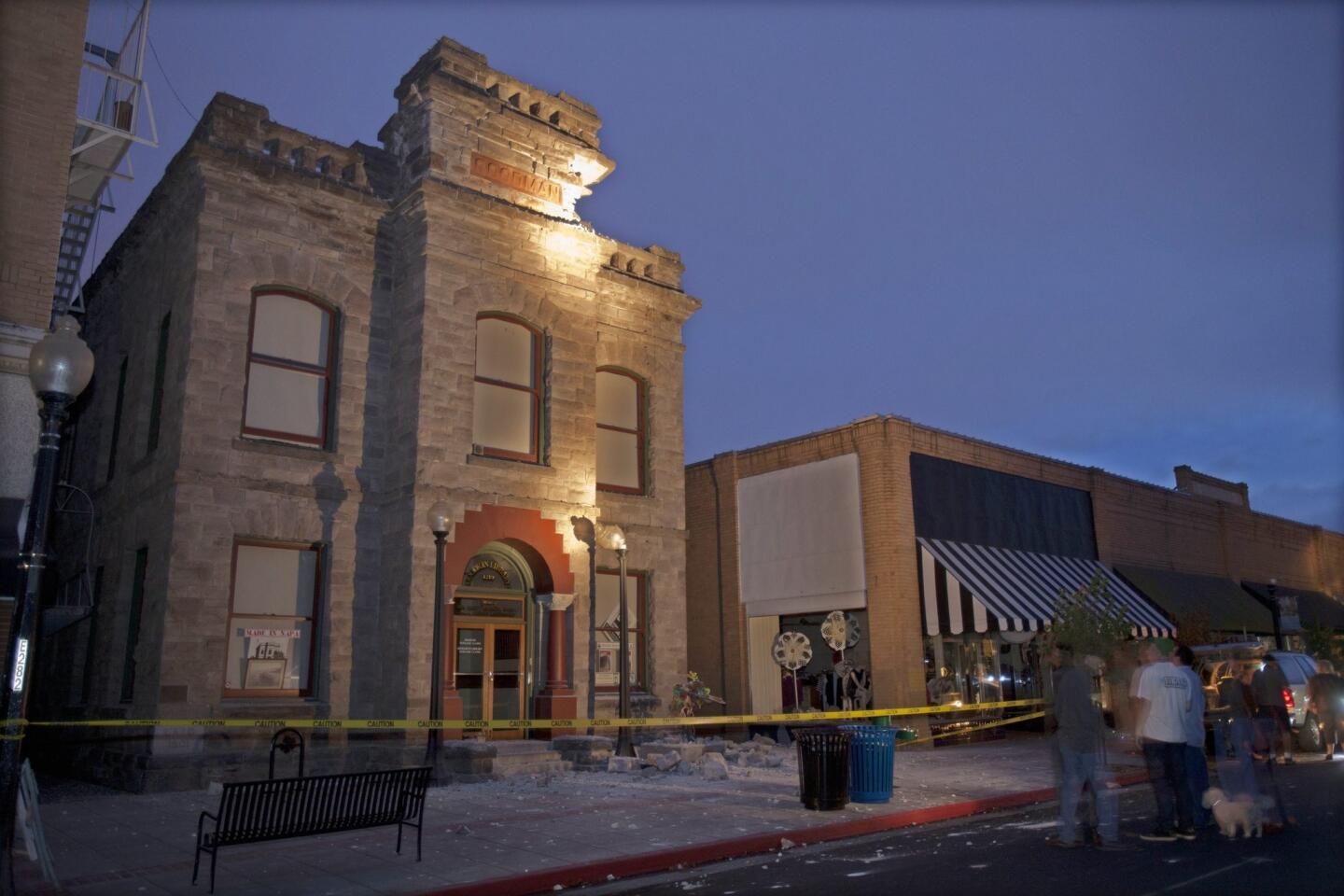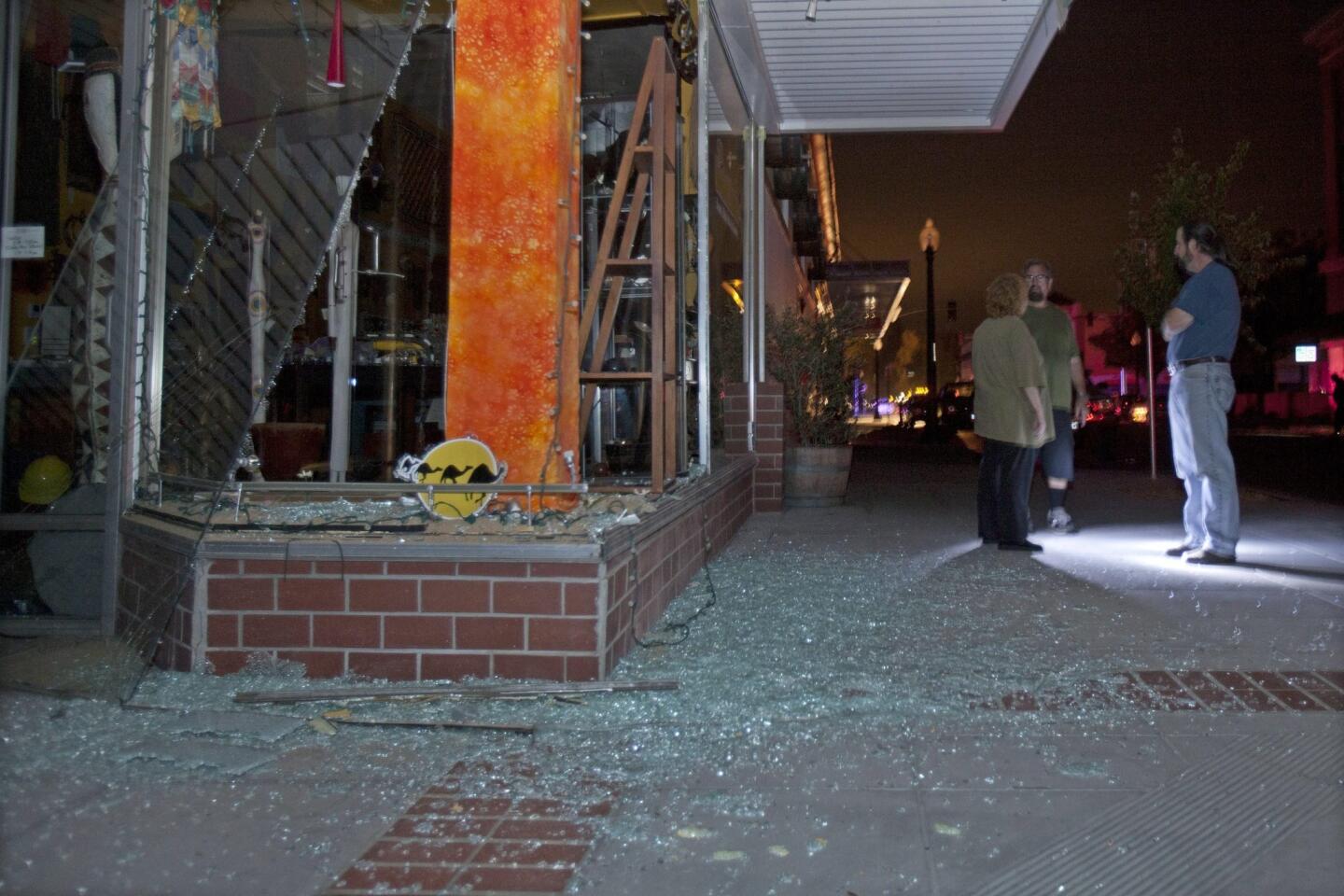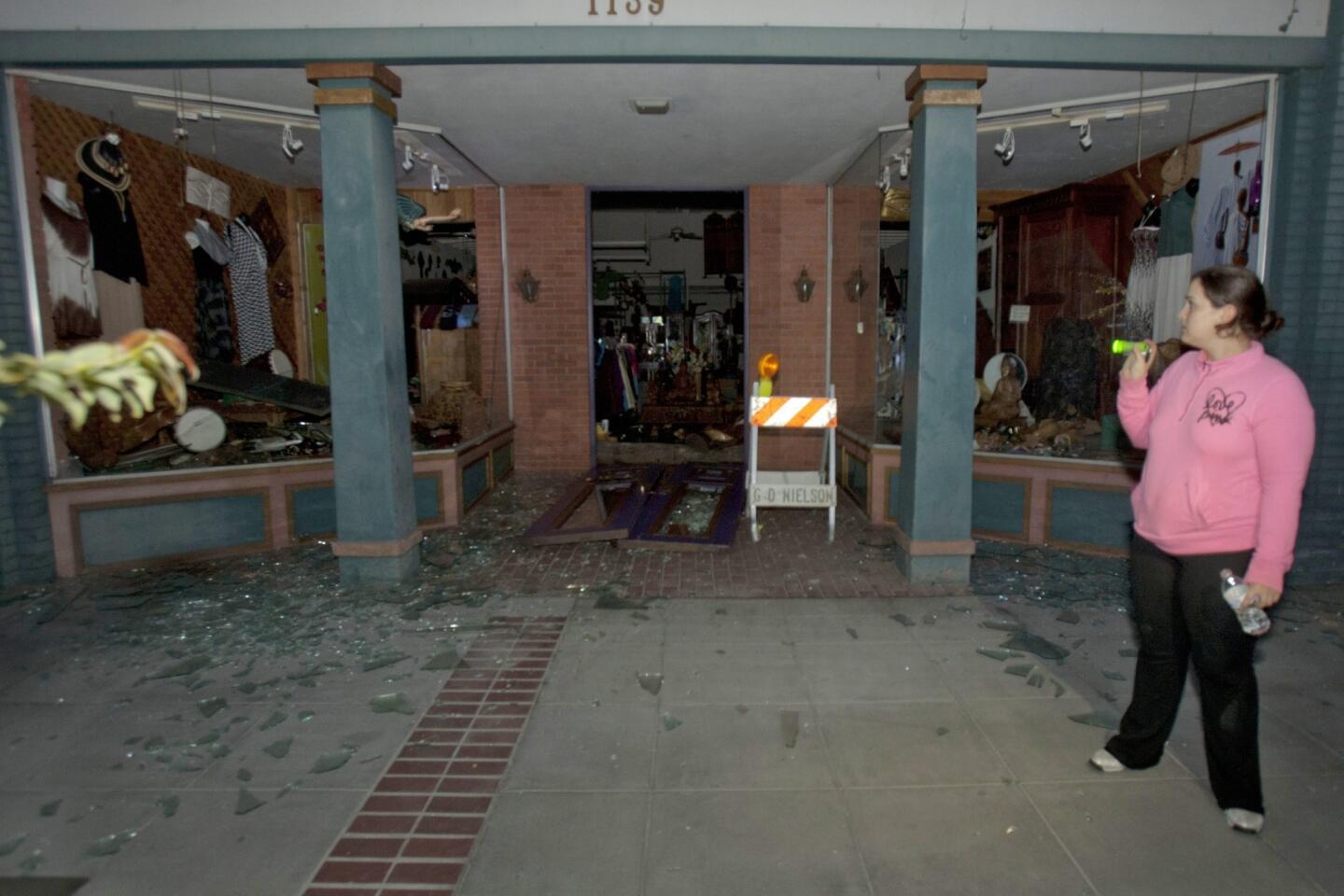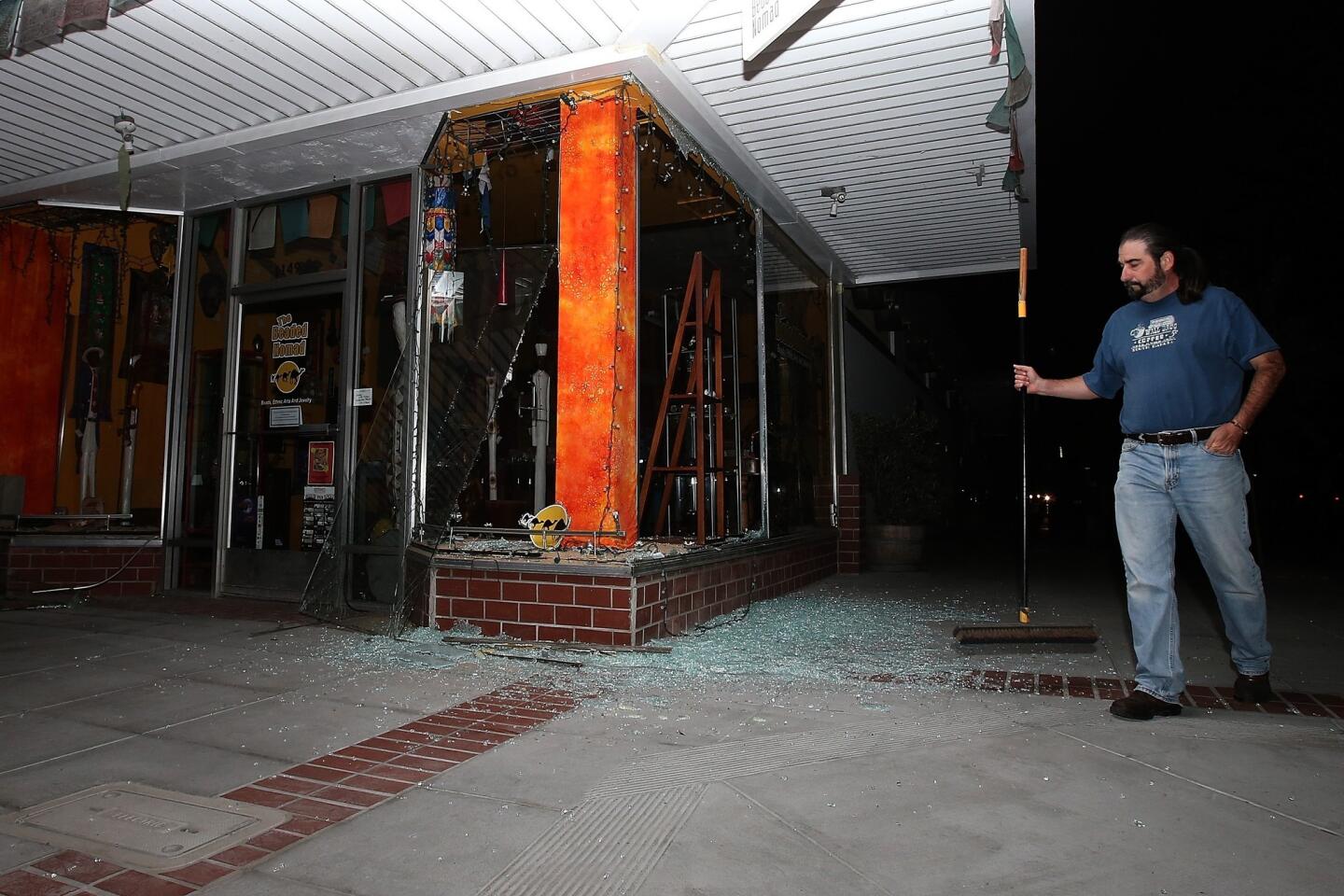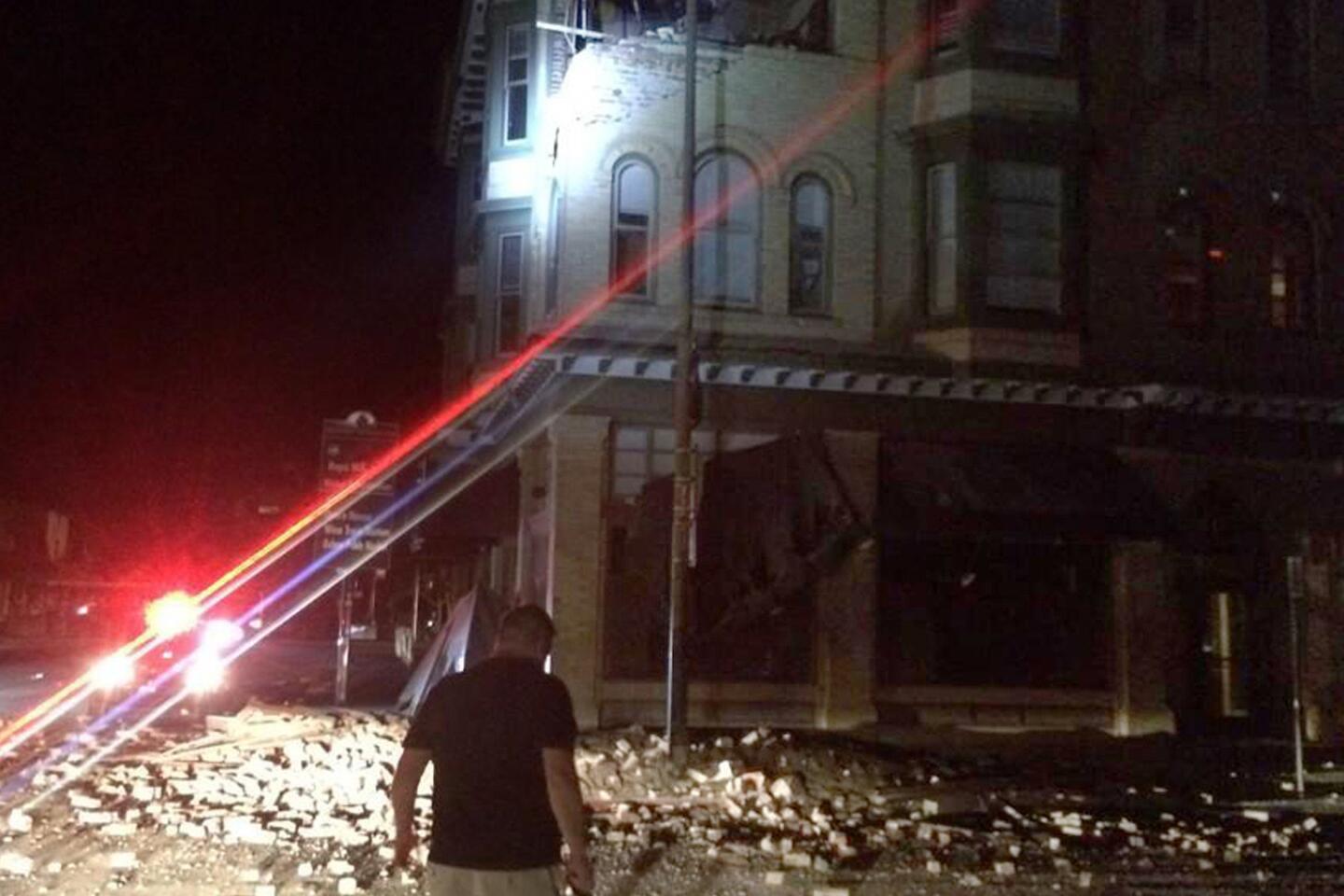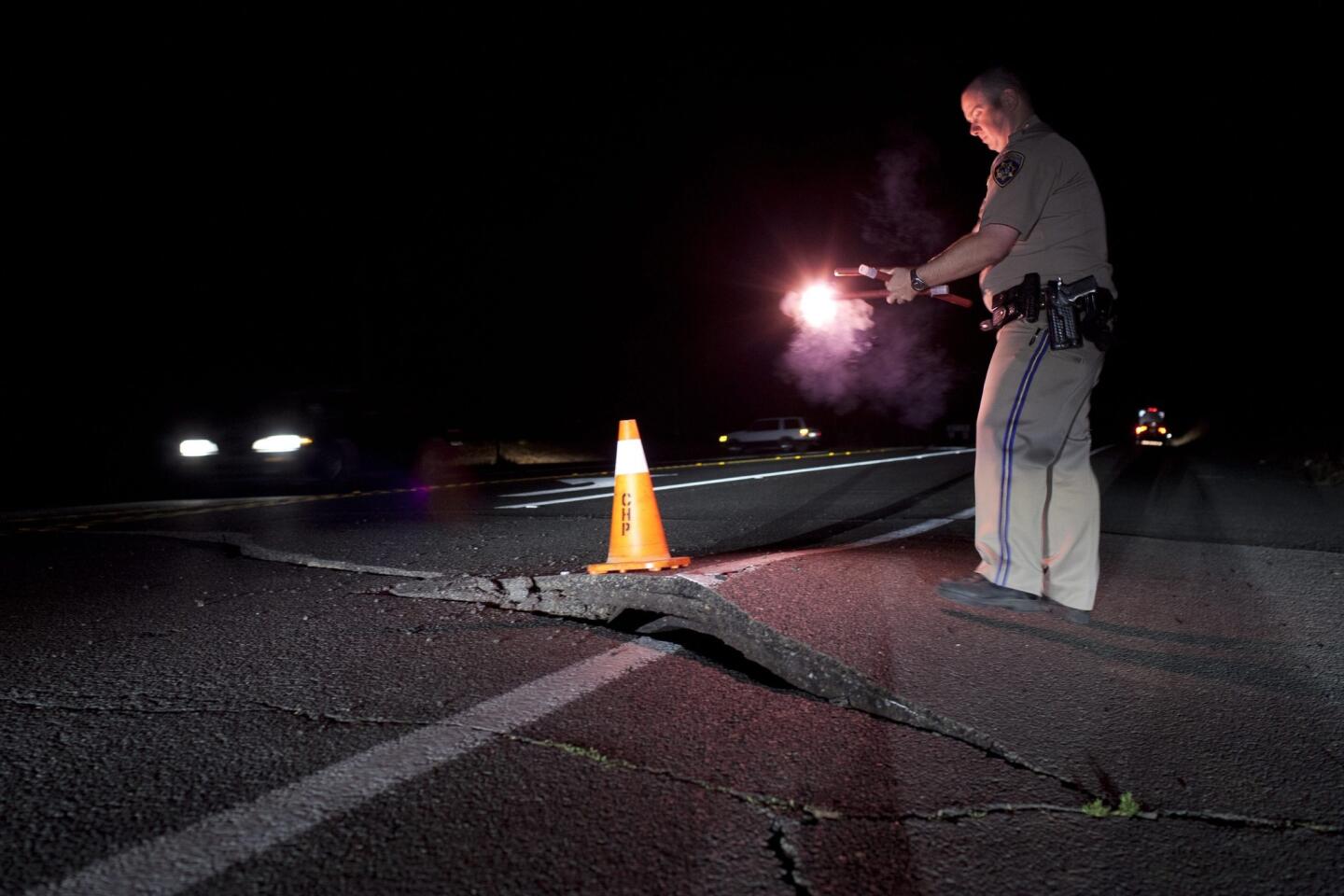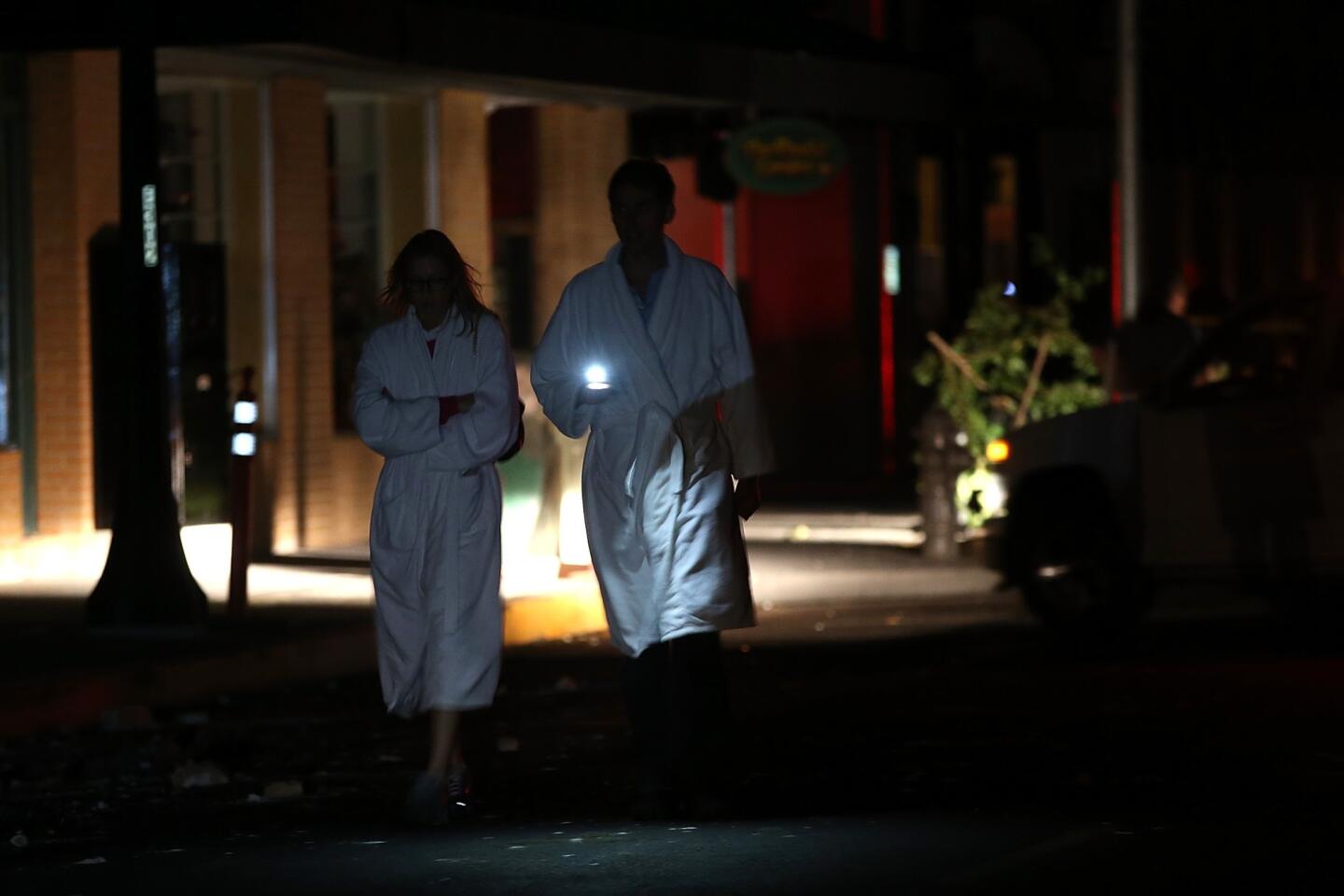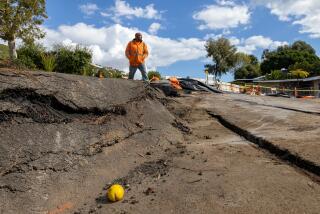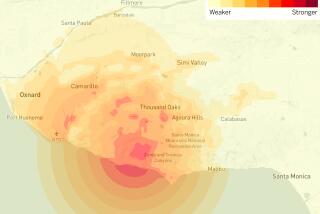After big quake, Napa fault could move 6 inches in 3 years
Think the Napa fault stopped moving after producing a 6.0 earthquake in August? Think again.
The fault that caused that Napa quake is forecast to move an additional 2 to 6 inches in the next three years in a hard-hit residential area, a top federal scientist said at a meeting of the American Geophysical Union in San Francisco on Tuesday.
It is the first time scientists have formally forecast the gradual shifting of the ground in a residential area after an earthquake.
“Until the South Napa earthquake happened, we had not clearly foreseen just what a problem that could be,” U.S. Geological Survey geophysicist Ken Hudnut said.
If the worst-case forecast comes true, that could pose problems for homeowners who have already made repairs to their homes following the earthquake.
“If the actual fault movement is the low-end of the range ... they might be fine,” Hudnut said. “But if it’s bad luck, and if it’s toward the high end of our forecast range ... they might have to do another repair again later.”
The movement is expected in the Browns Valley neighborhood underneath about 20 homes. A previously unmapped fault line cracked through them, damaging some of their foundations.
Scientists have observed gradual movement in the earth after an earthquake, called “afterslip,” in previous California earthquakes. Afterslip comes after the sudden shock of an earthquake.
This is the first time afterslip has been documented so clearly in a quake striking a highly populated area. Afterslip following the 1971 Sylmar quake was not significant, but the phenomenon has been observed in the 1979 Imperial Valley, 1987 Superstition Hills and 2004 Parkfield earthquakes.
Afterslip occurs because of delayed movement of the earth. Far underneath the Earth’s surface, the solid rock broke instantaneously during the earthquake. But closer to the surface, the earth had the consistency of clay, slowing the shifting of the ground.
“It wasn’t able to slip that suddenly,” so the movement will happen later, Hudnut said. “You can imagine how if you take a piece of clay between your hands and try to move it, it’ll smear instead of snapping.”
Afterslip was observed shortly after the August earthquake, and has been slowing down over time.
Forecasting afterslip could be very important in future earthquakes. A magnitude-7 earthquake on the Hayward fault east of San Francisco could trigger afterslip of more than 6 inches within three years of the temblor, which could make it difficult for property owners on top of the fault to make repairs soon after the earthquake.
The forecast for Napa could change in the coming months. It’s only been a few months since the earthquake, Hudnut said, and only time will tell just how bad the movement will be.
Scientists will collect more observations and update the forecast again in February — just like how weather forecasts are updated, based on the latest observations. These forecasts are being completed for the U.S. Federal Emergency Management Agency and state and local agencies.
Hudnut acknowledged that the forecast comes too late for homeowners who have already completed repairs, but could help those who haven’t yet begun.
“We’re trying to get better and quicker at responding and forecasting in the future,” Hudnut said.
Ken MacNab, Napa’s planning manager, said the USGS forecast will help the city identify properties at greater risk “so we can ensure a proper level of review” before building permits are issued. Some proposed building plans may be required to have extra requirements beyond the state building code because of the fault risk, he said.
California law generally restricts the construction of buildings on top of active earthquake fault lines, but this area was not under a building restriction because much of the fault that ruptured in the August earthquake was not mapped.
State officials have since begun work to map the fault.
Twitter: @ronlin, @RosannaXia
More to Read
Start your day right
Sign up for Essential California for news, features and recommendations from the L.A. Times and beyond in your inbox six days a week.
You may occasionally receive promotional content from the Los Angeles Times.
